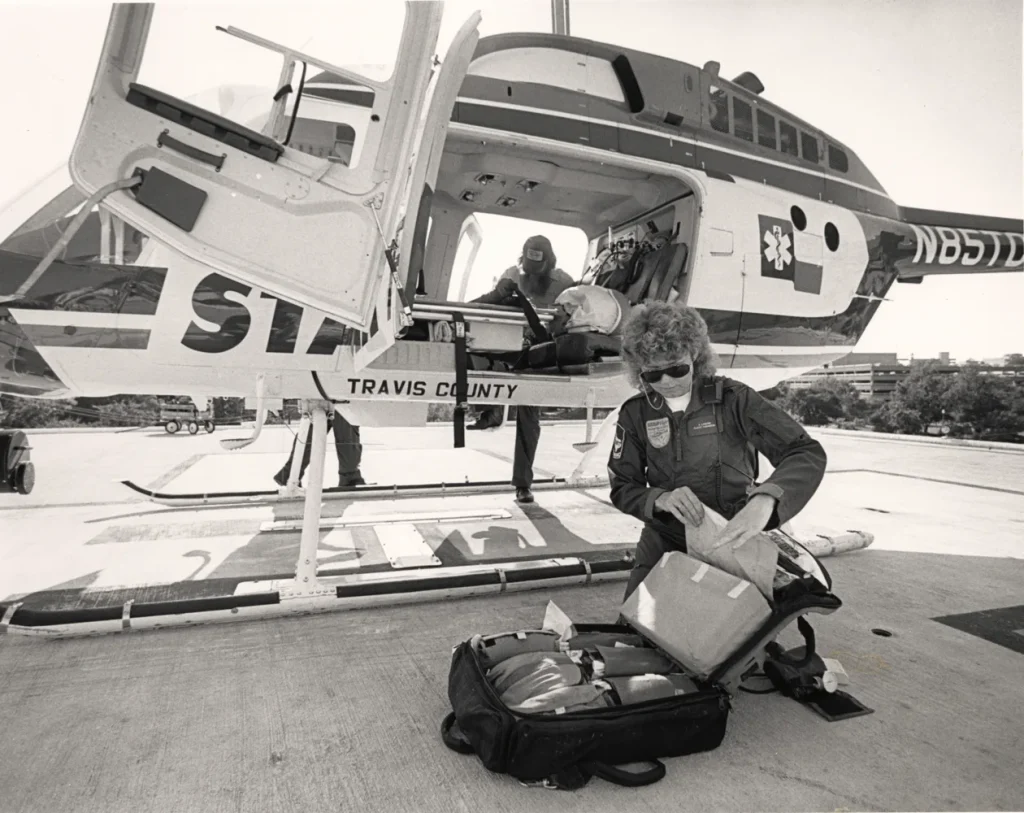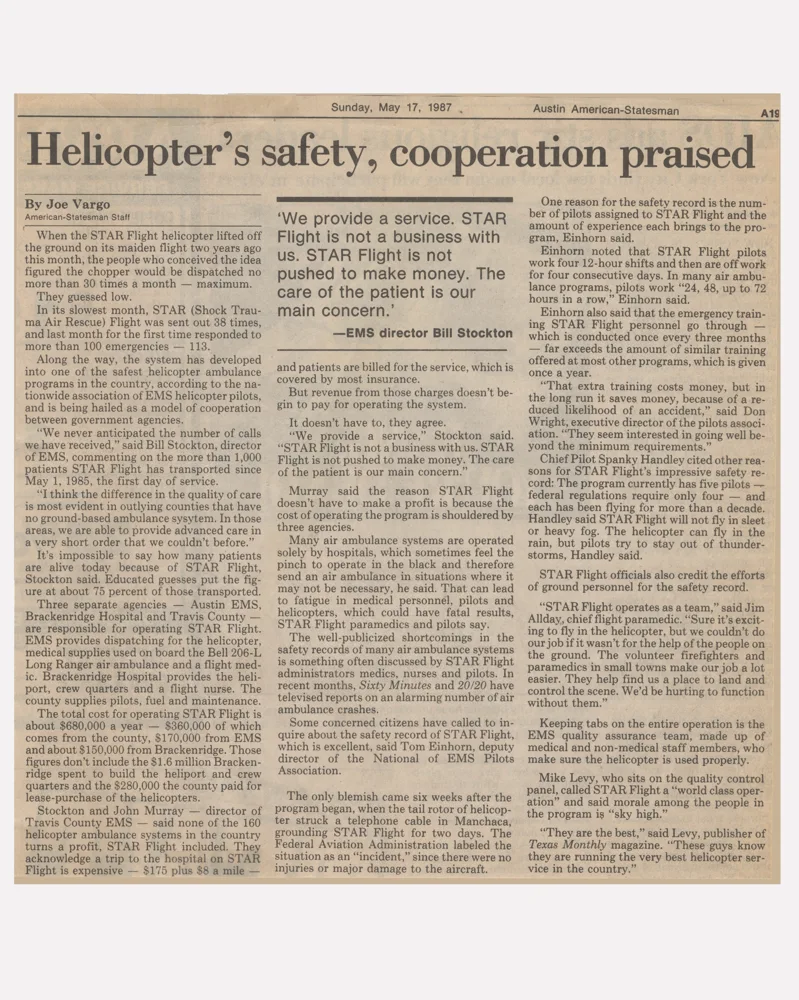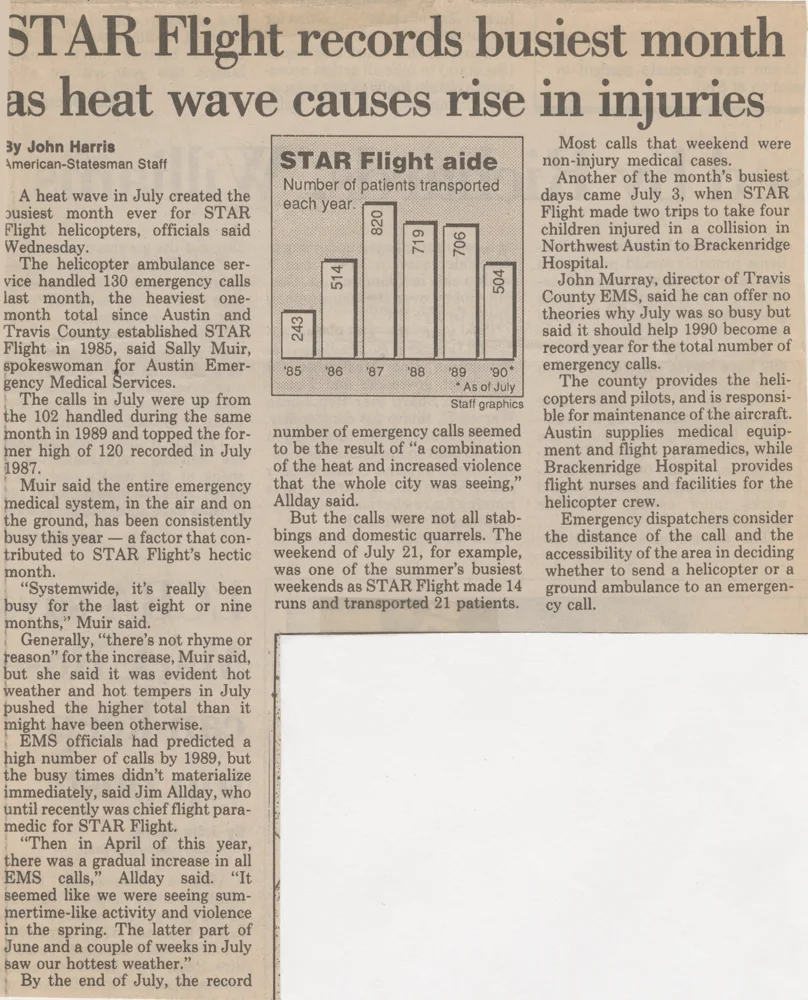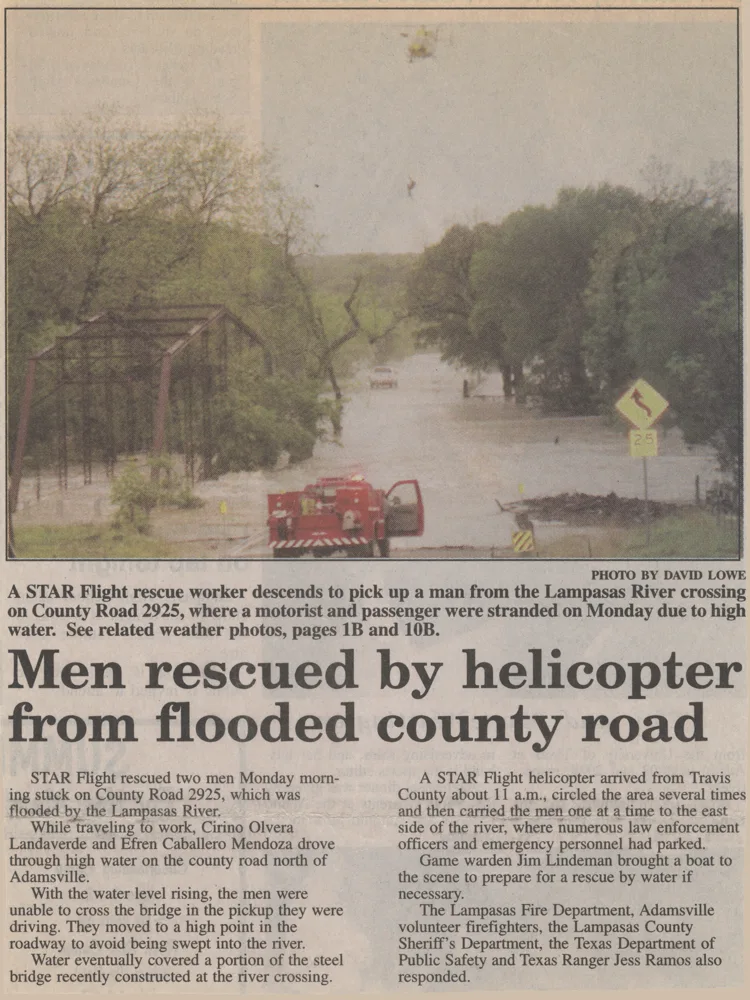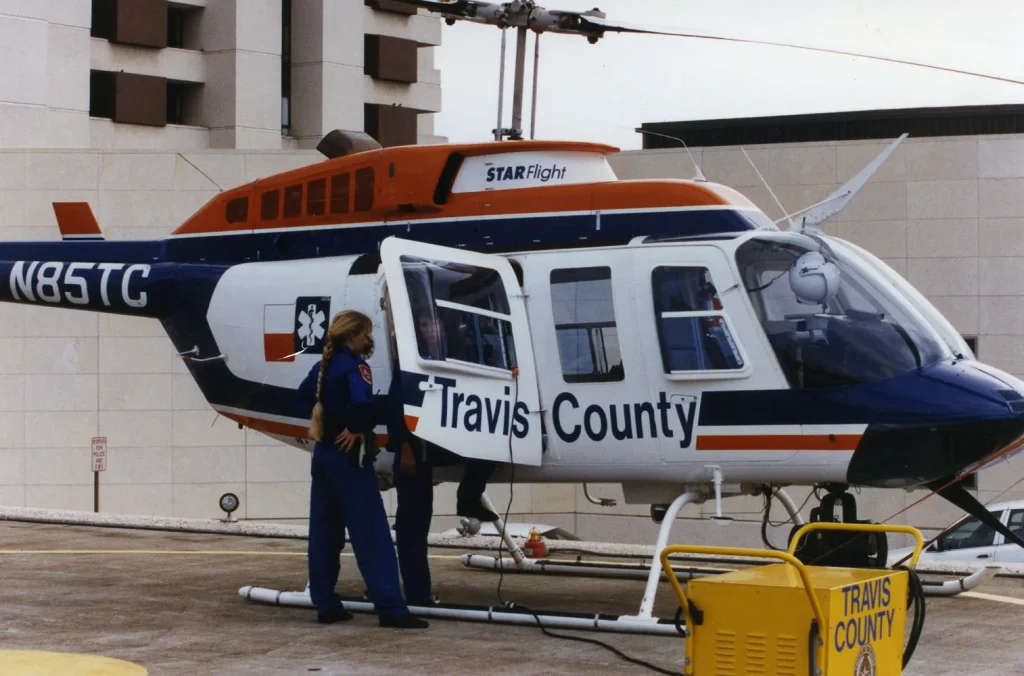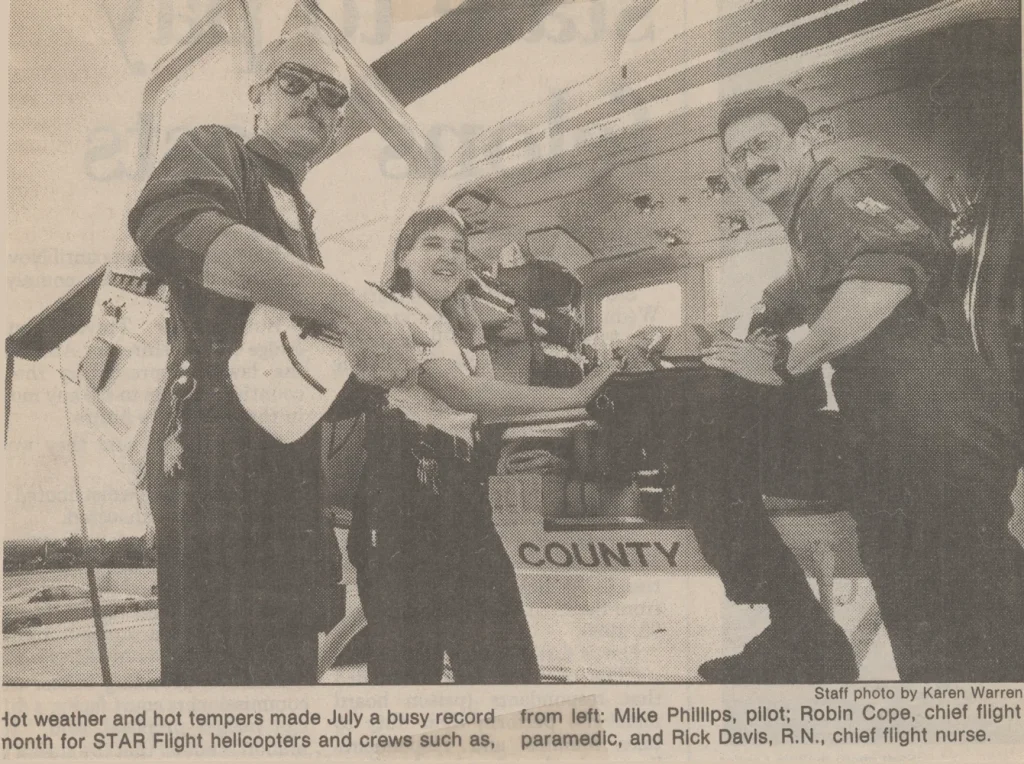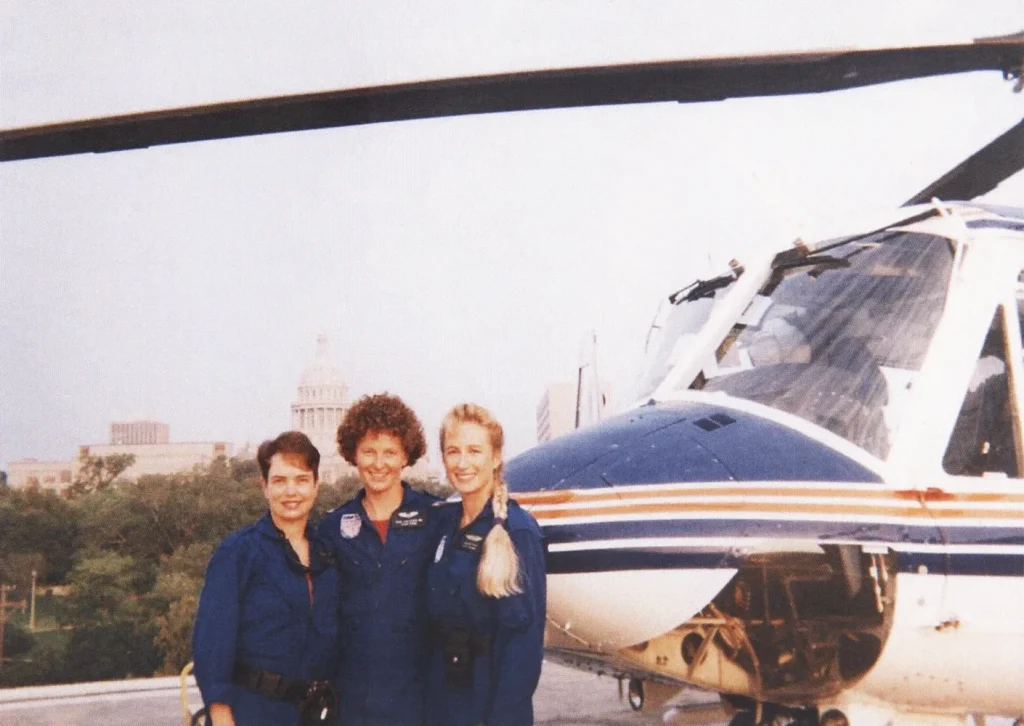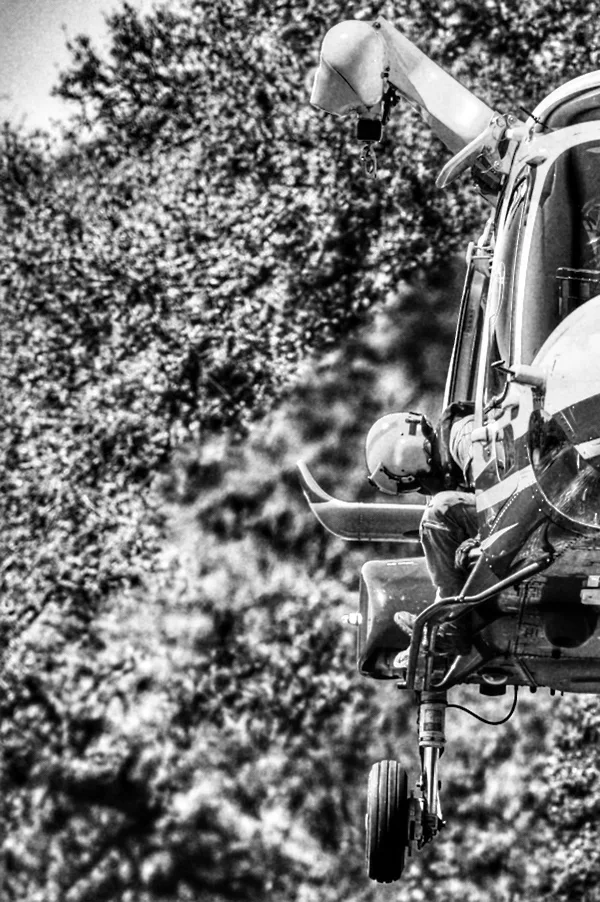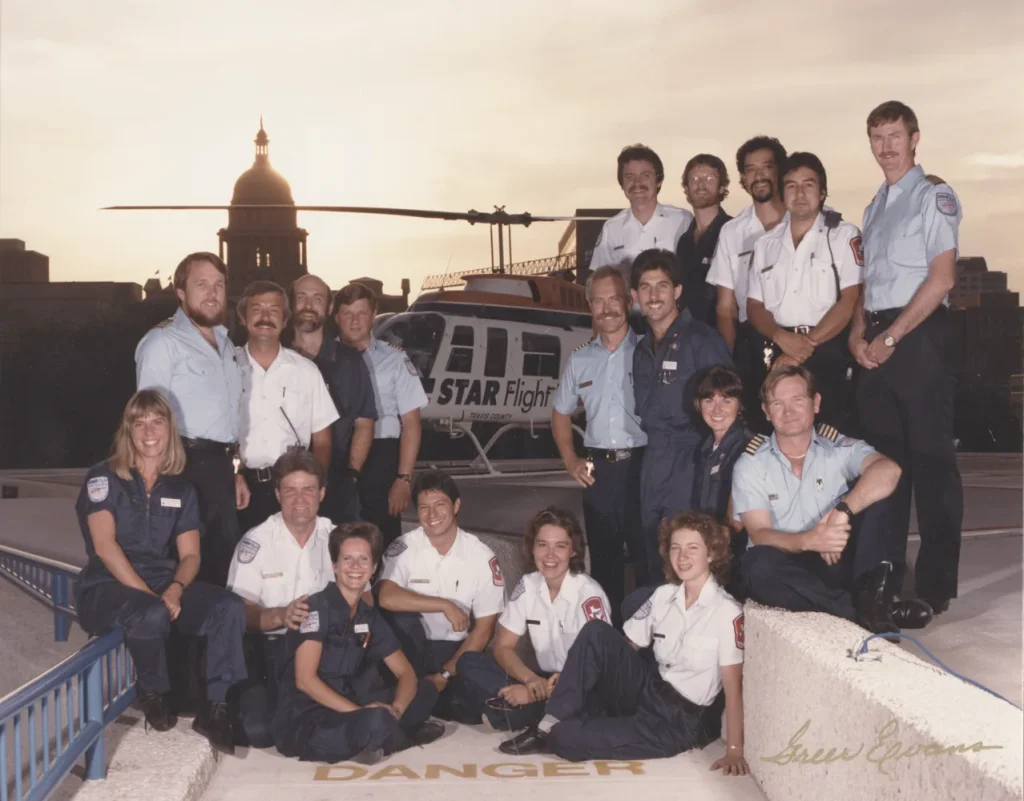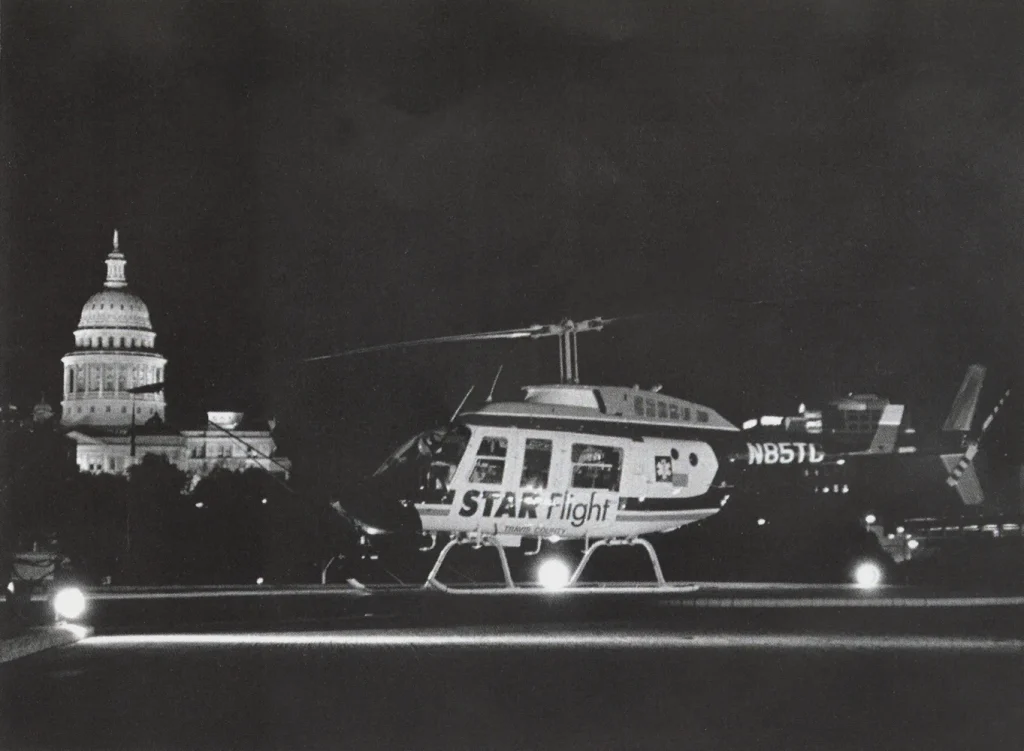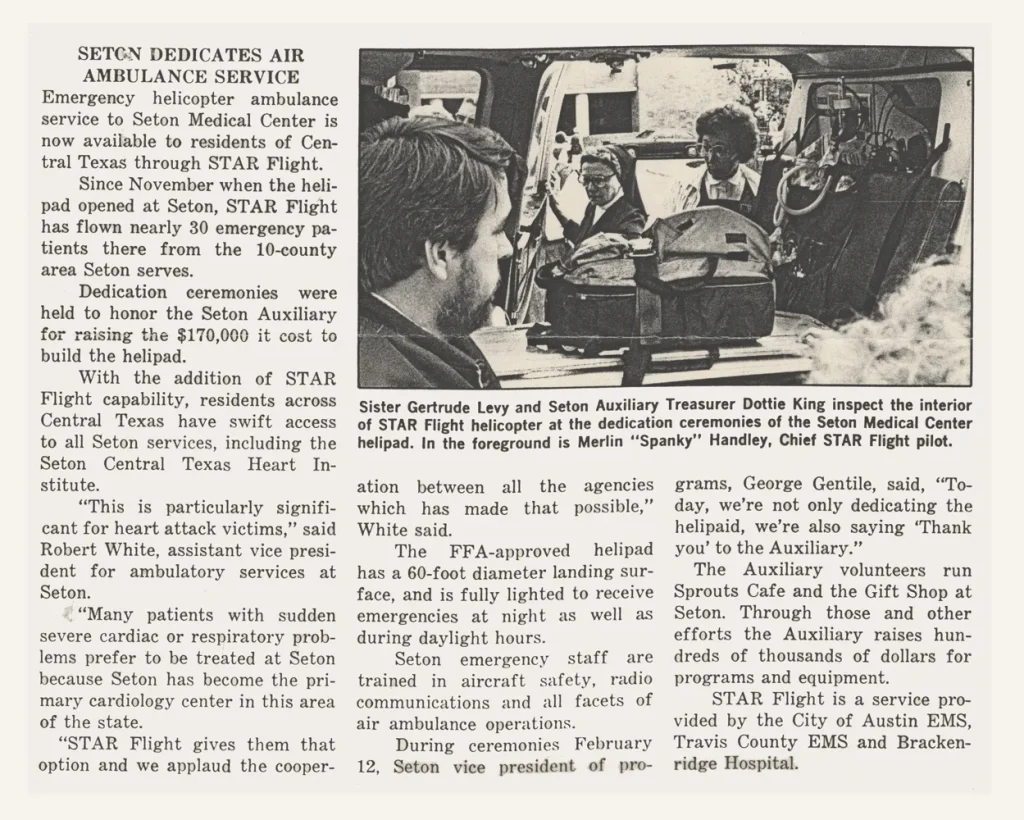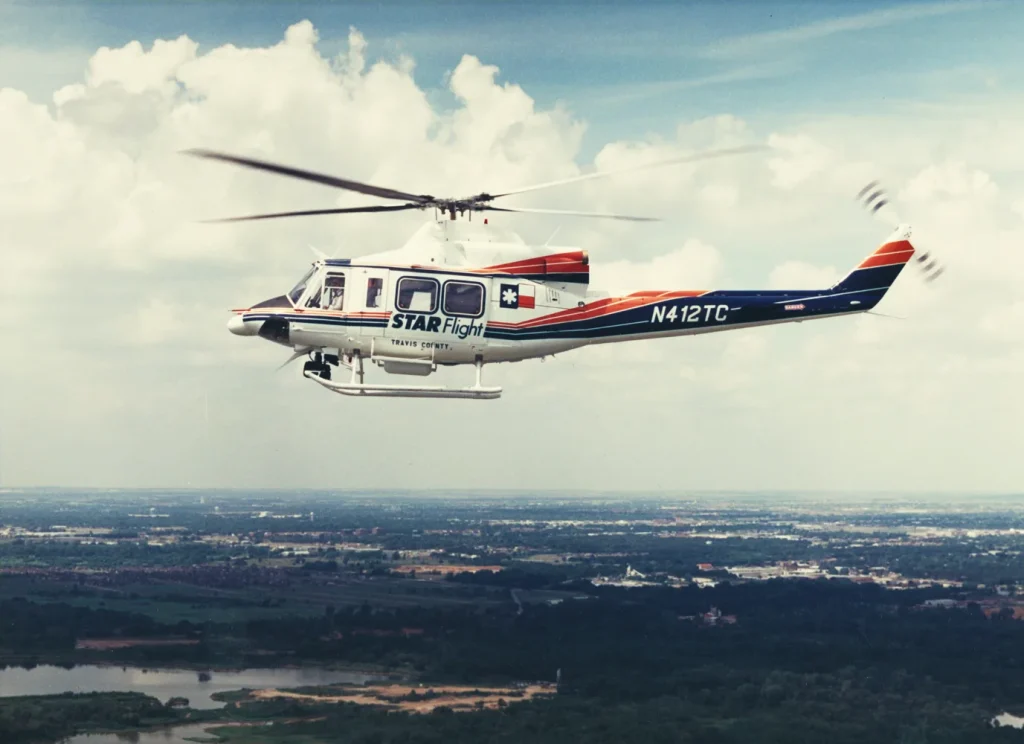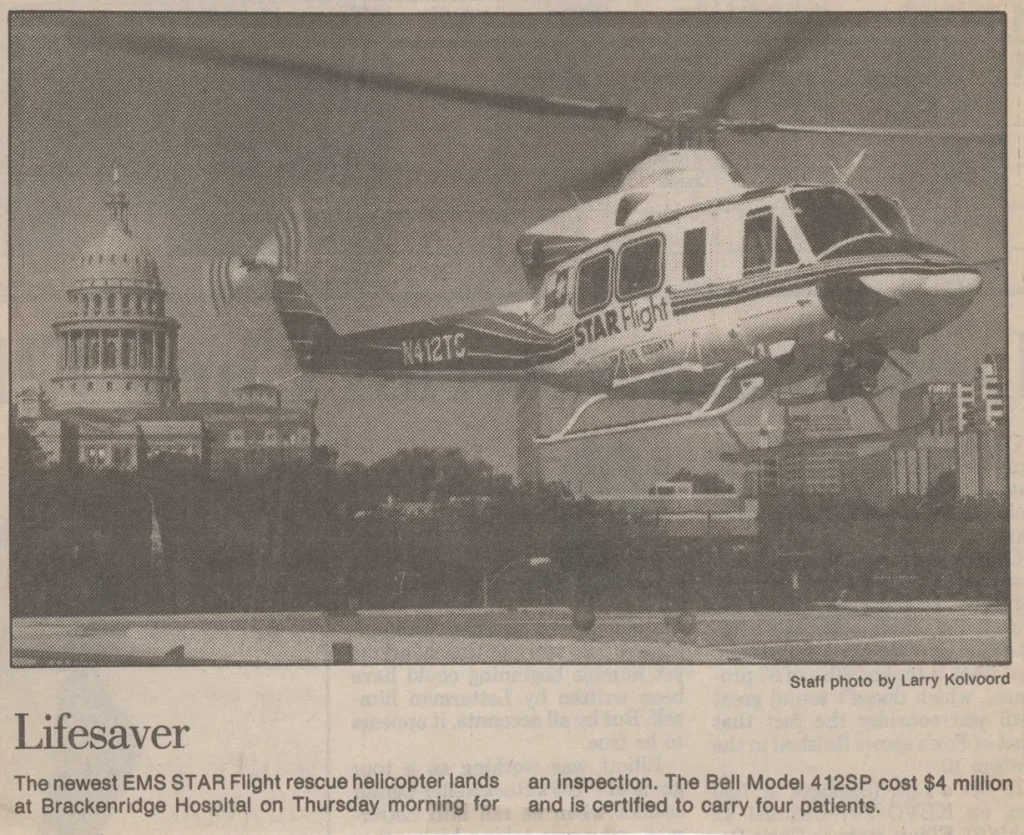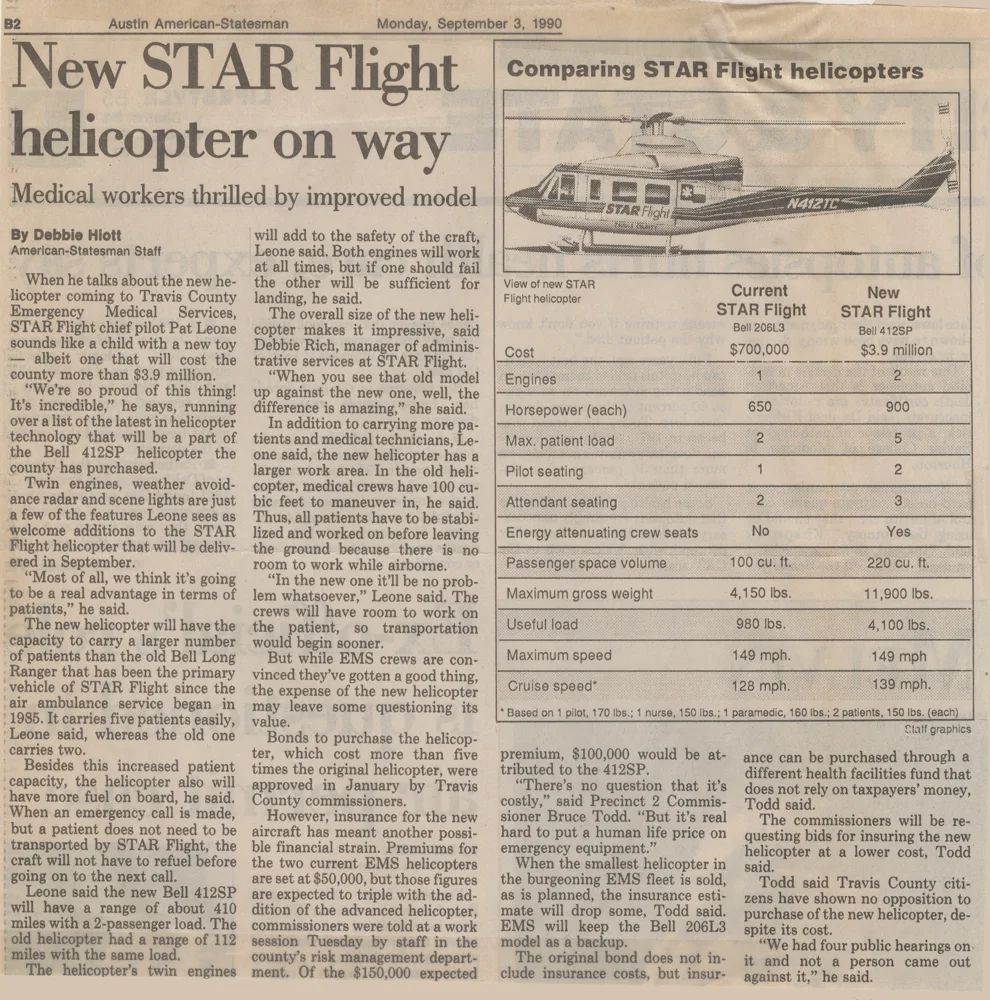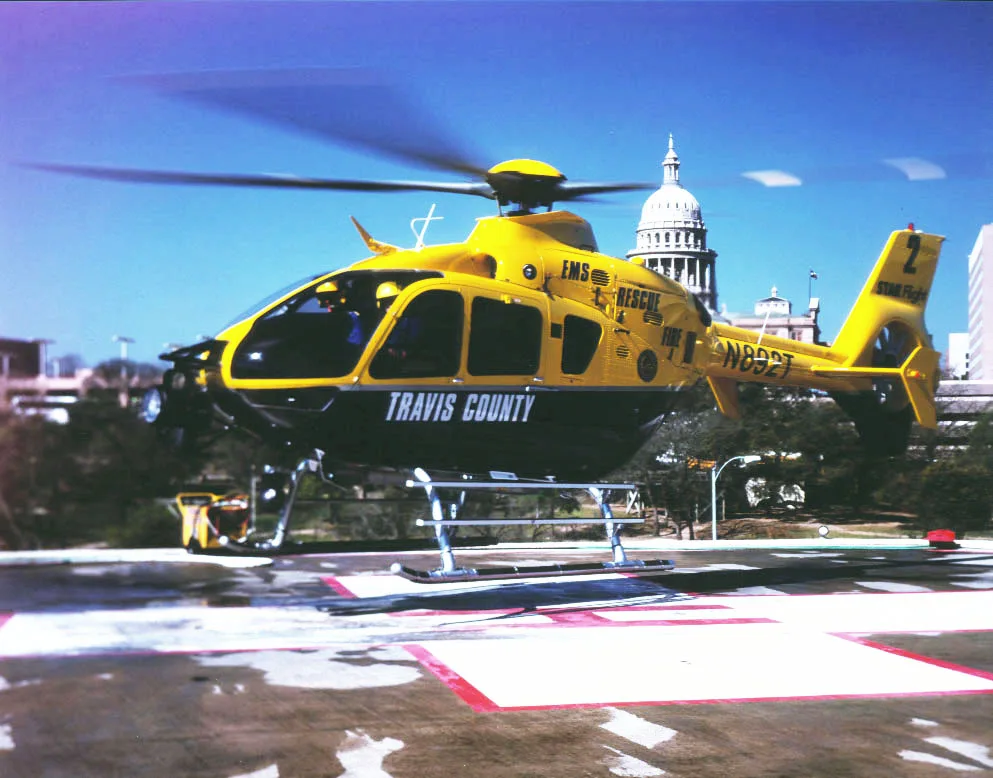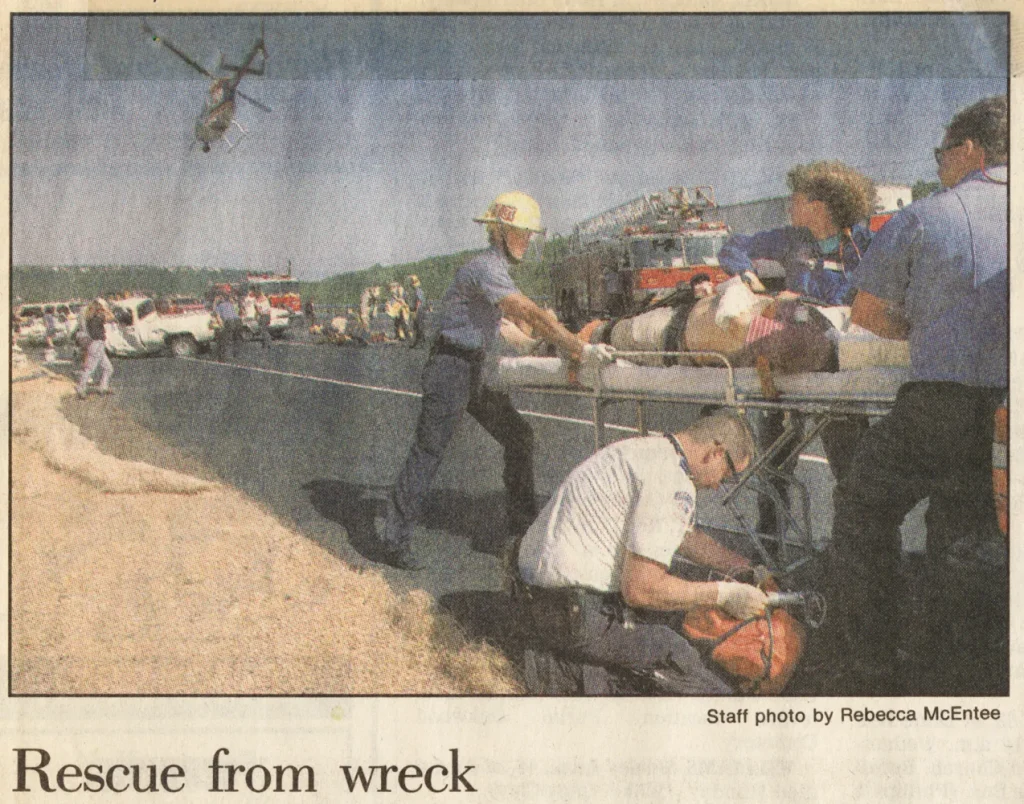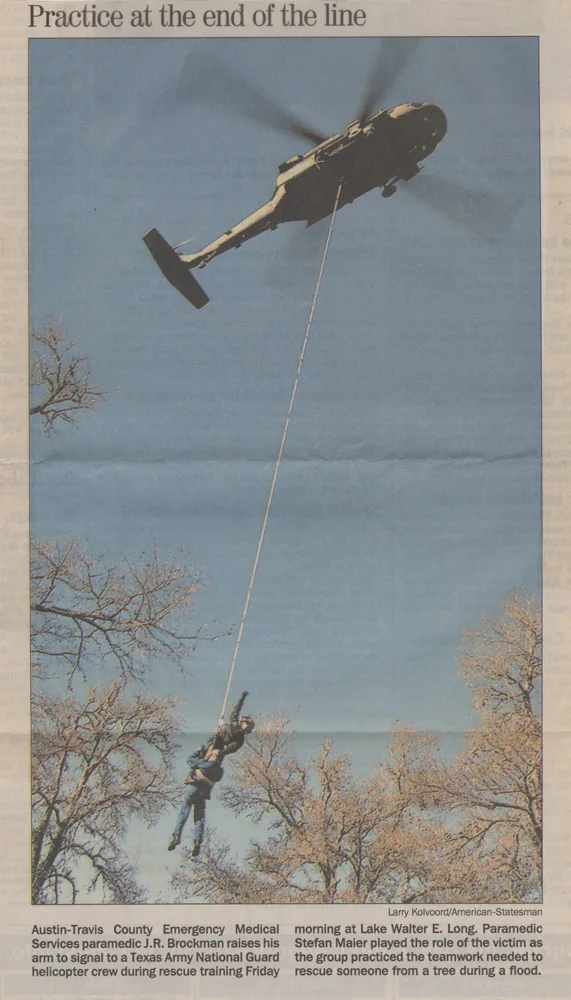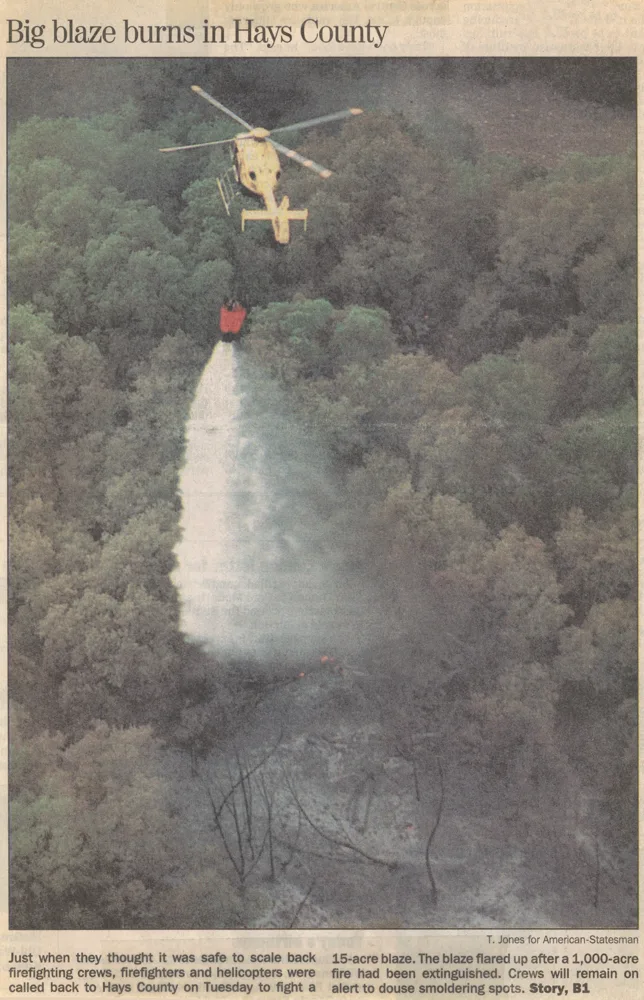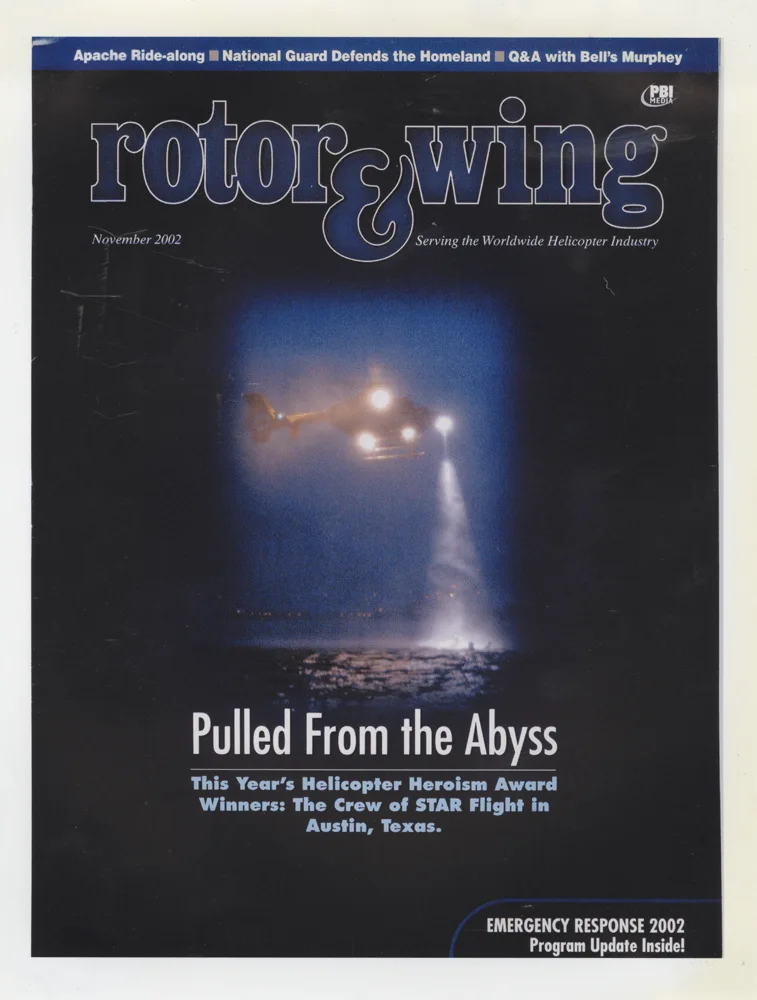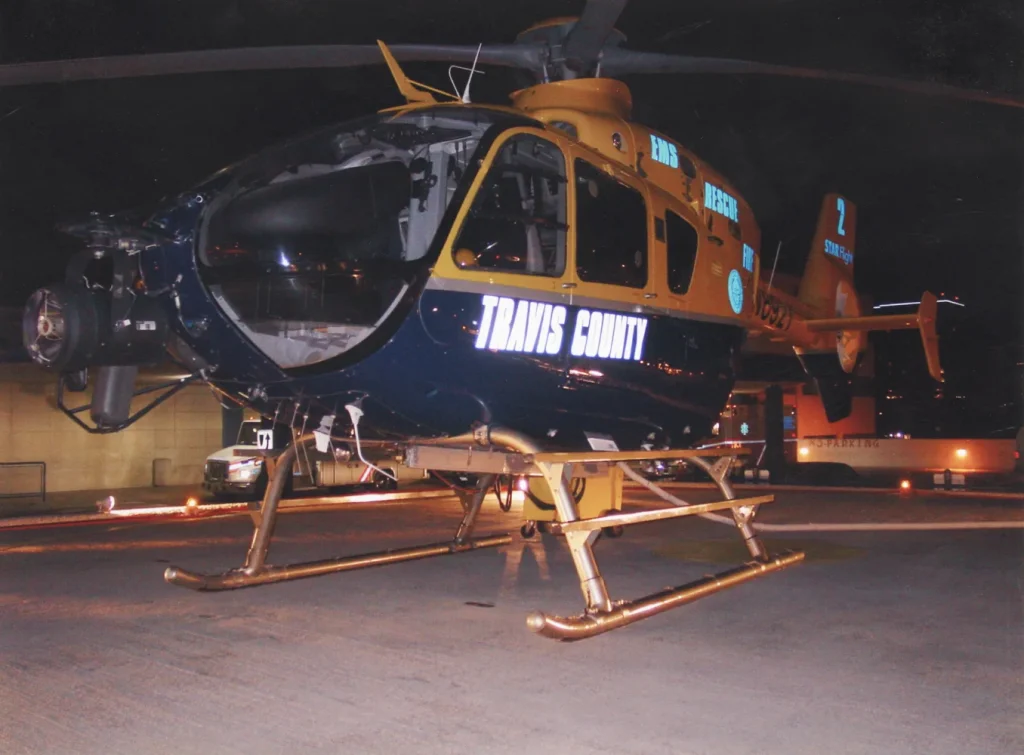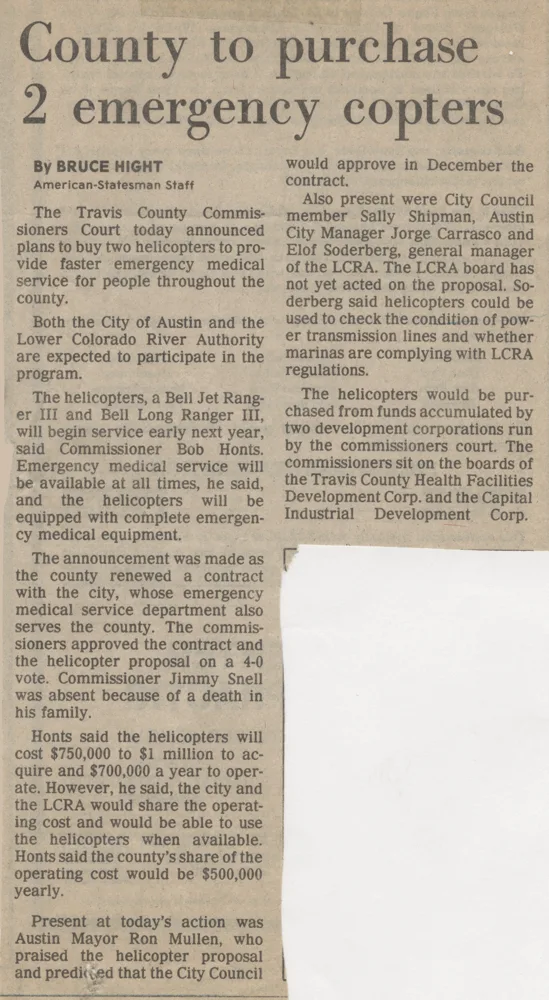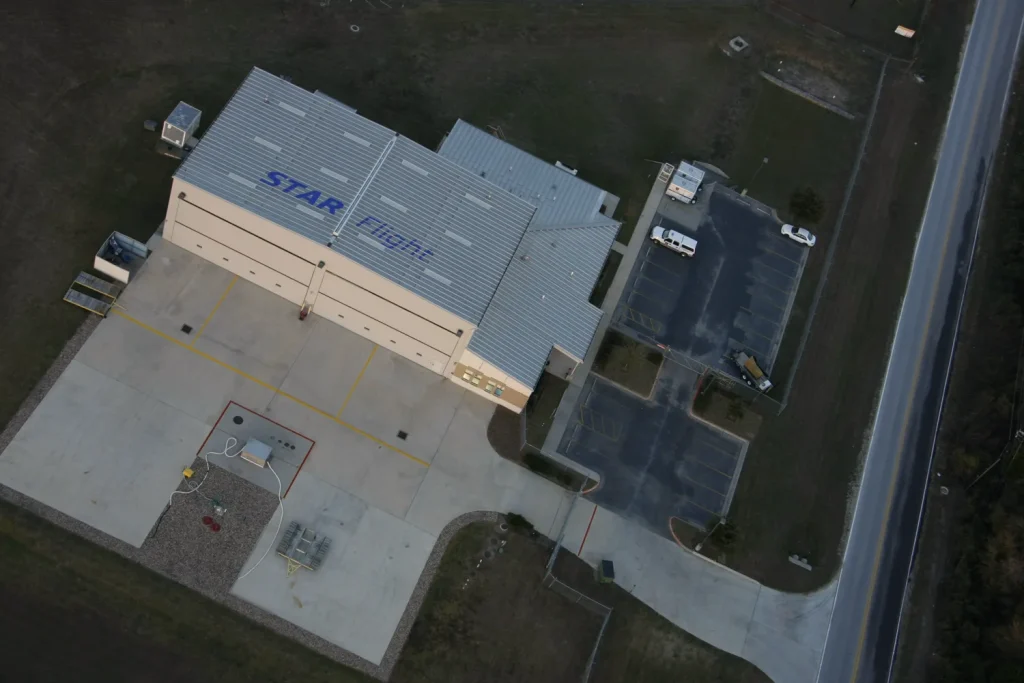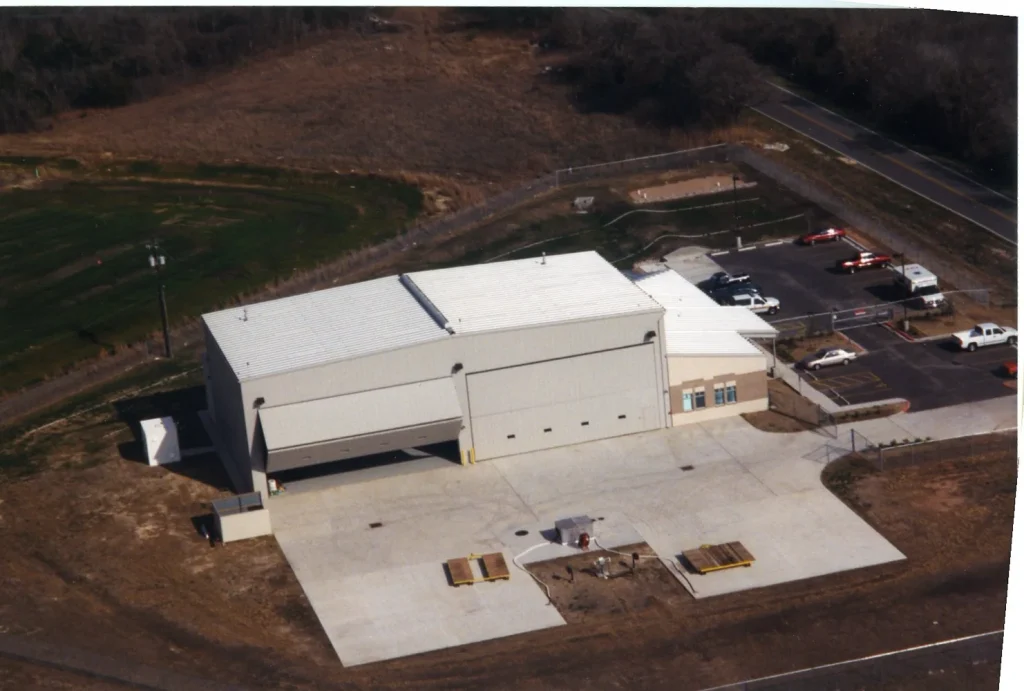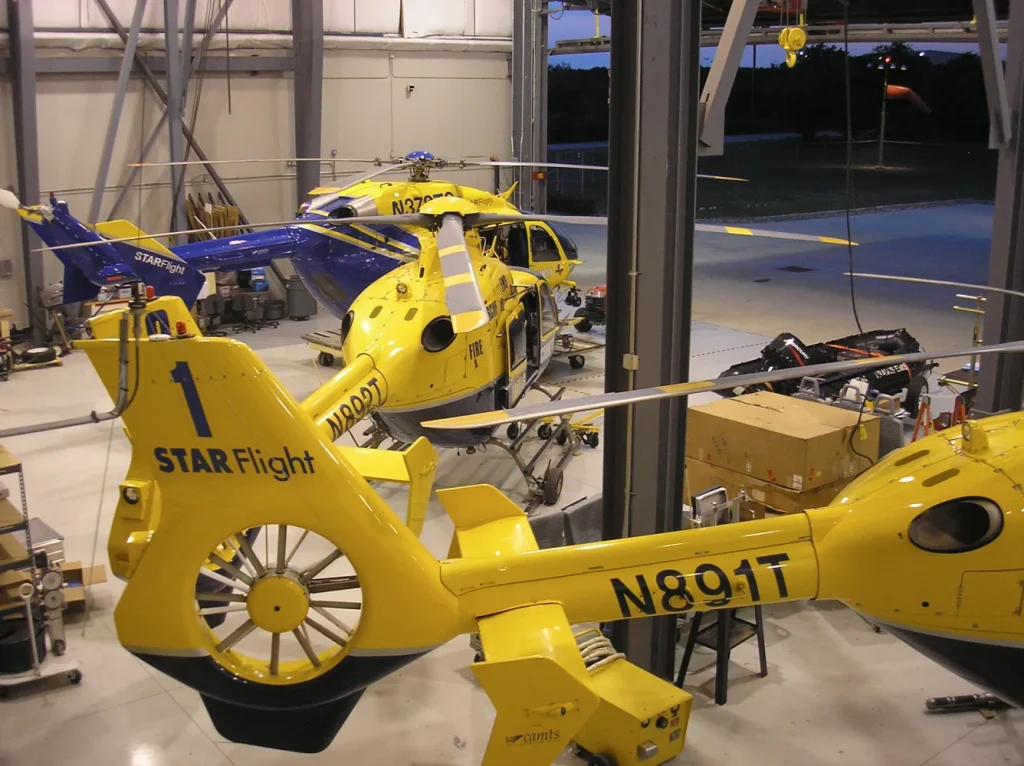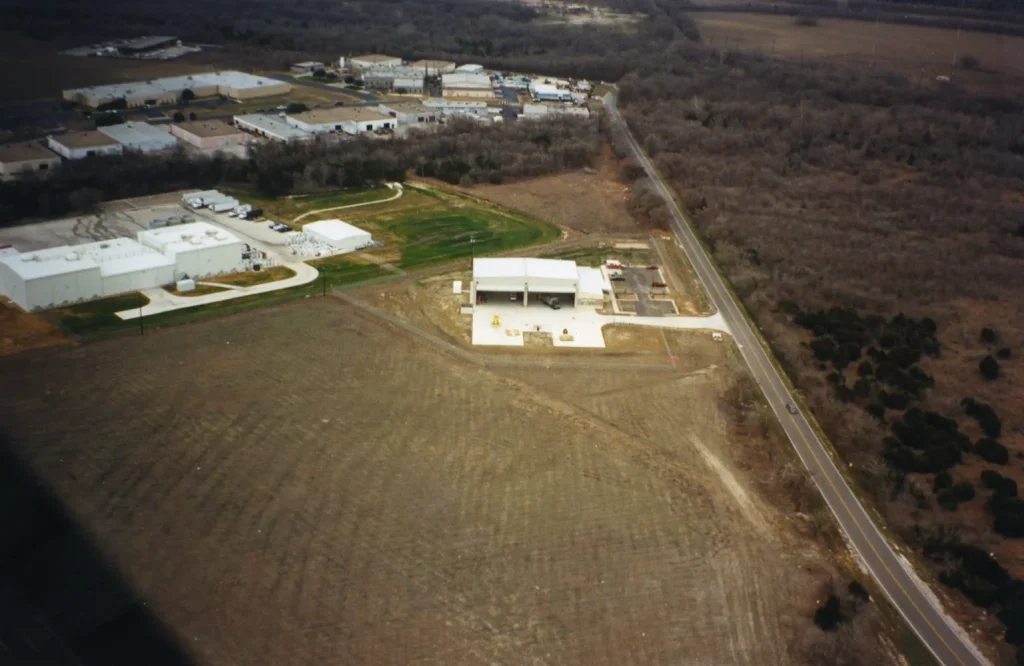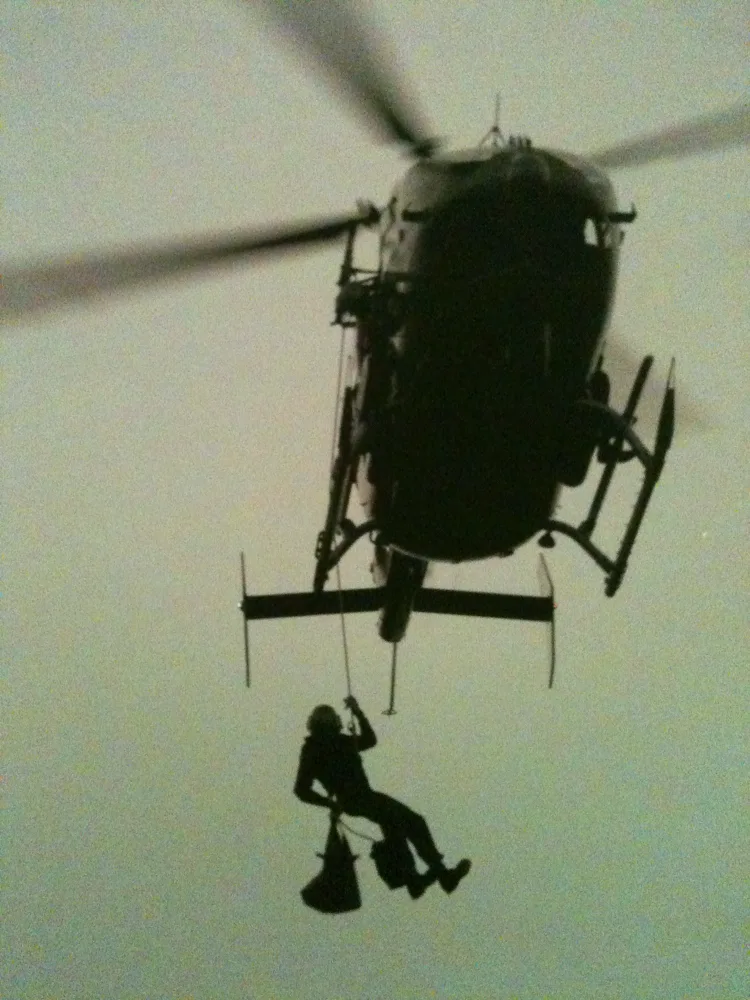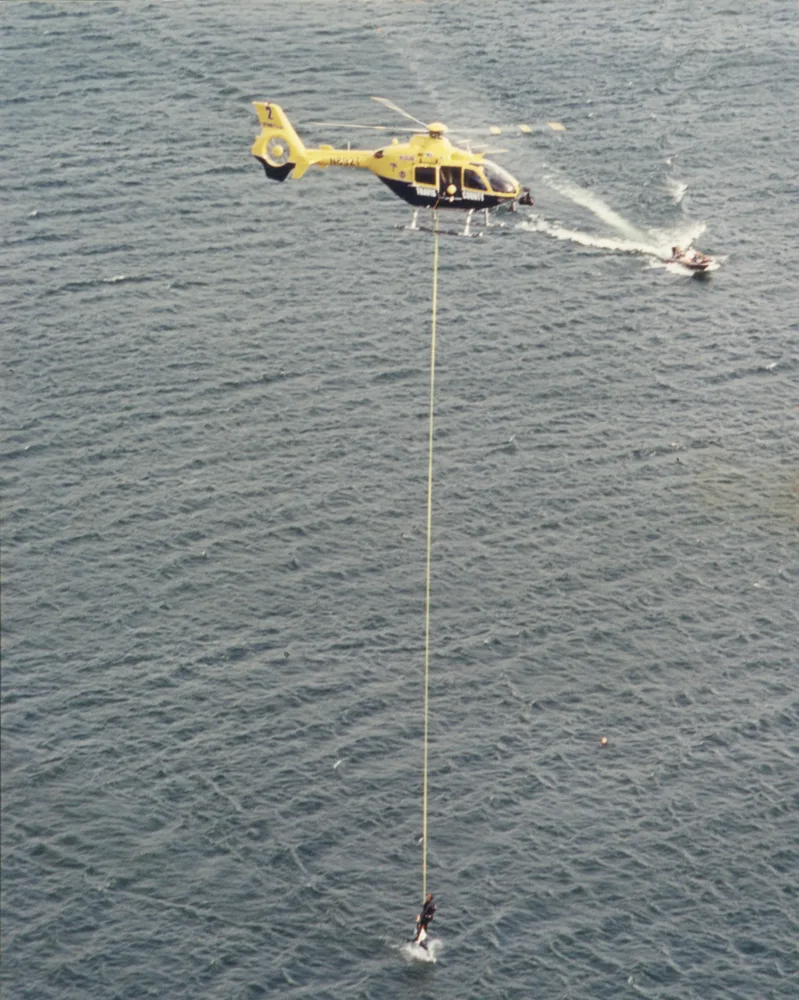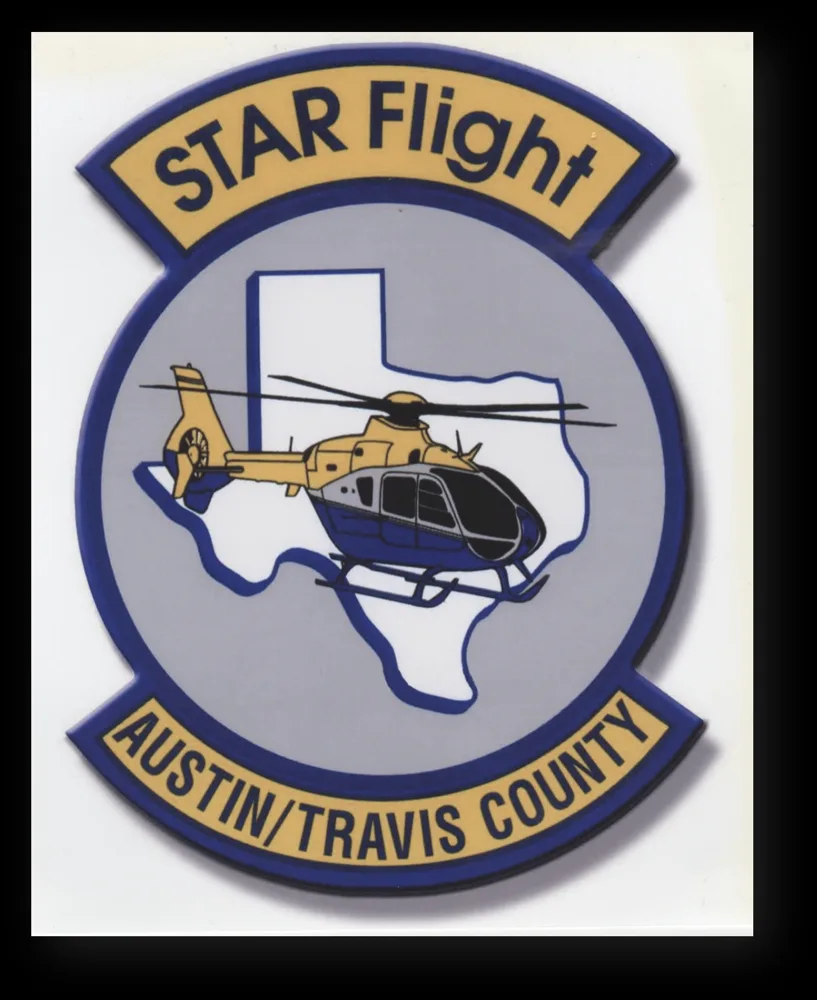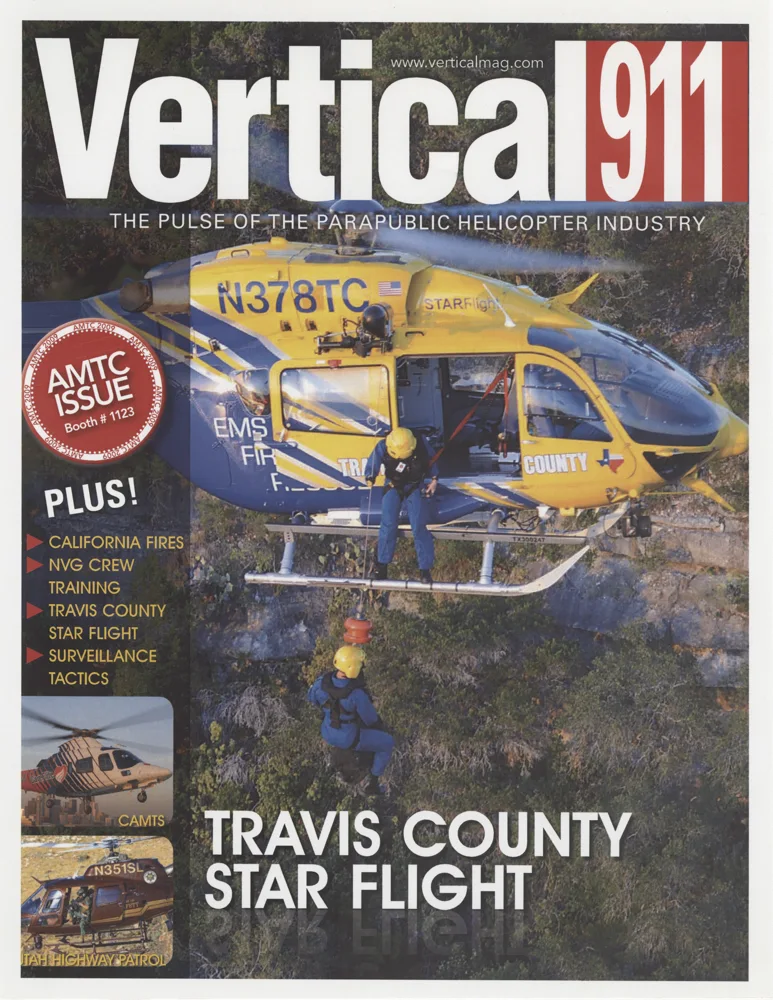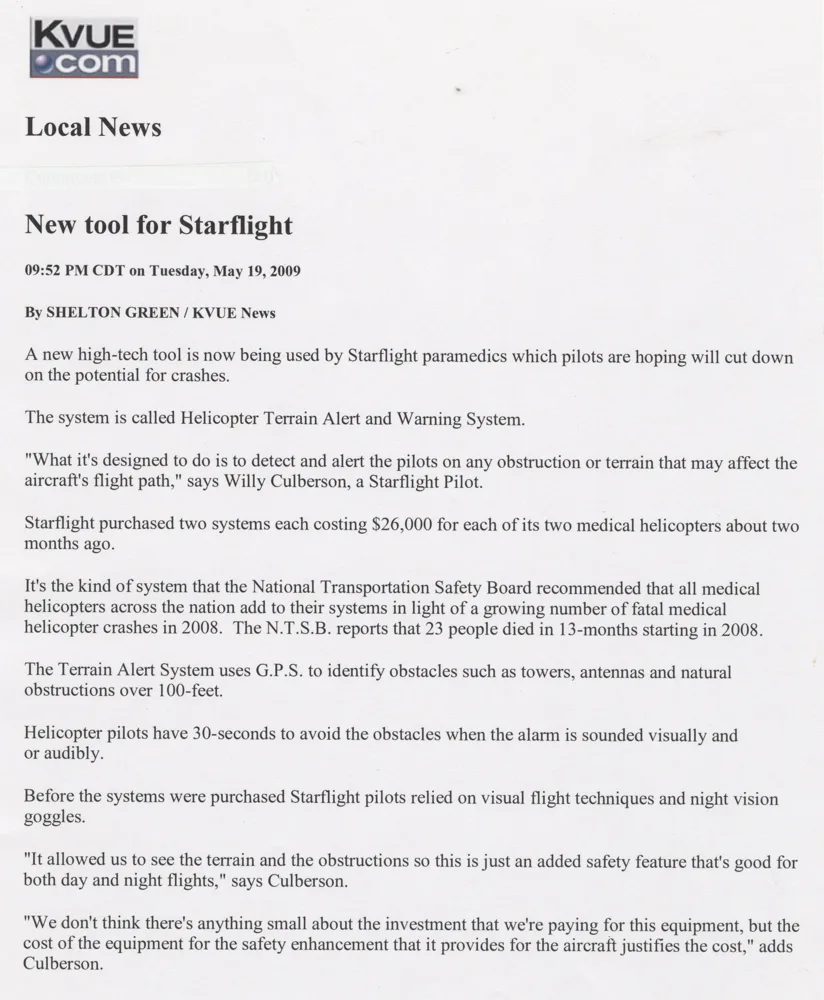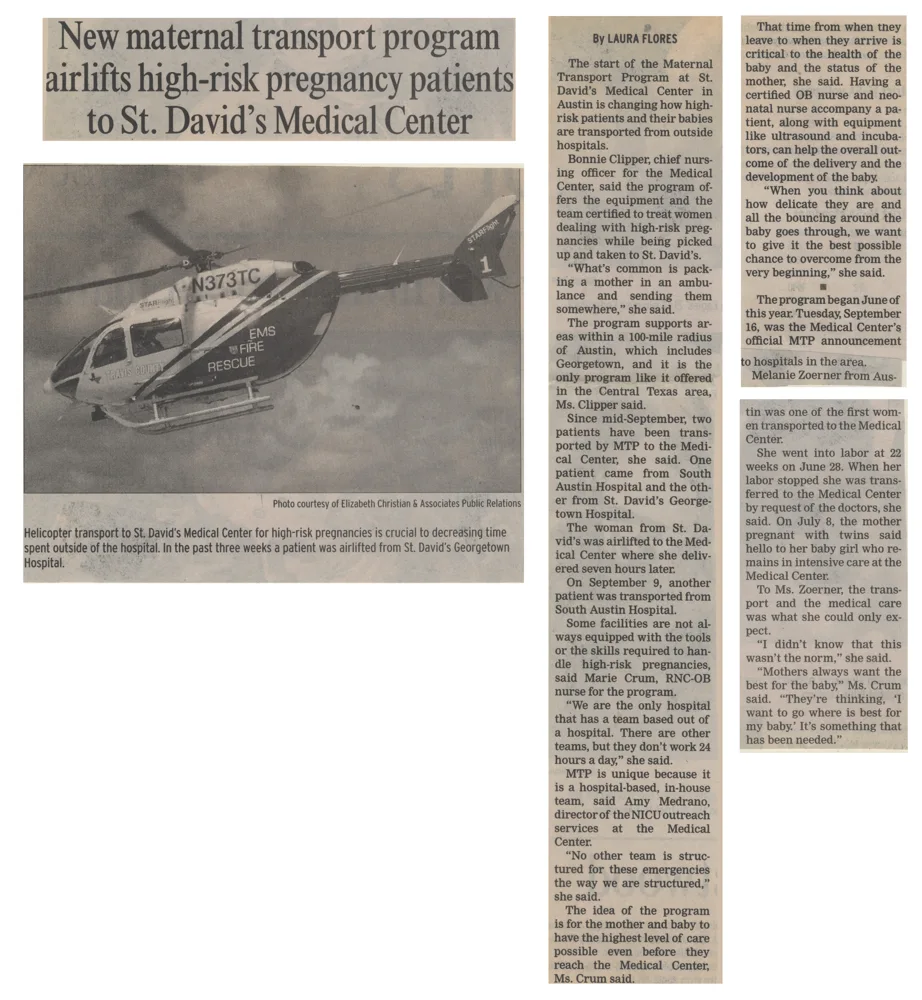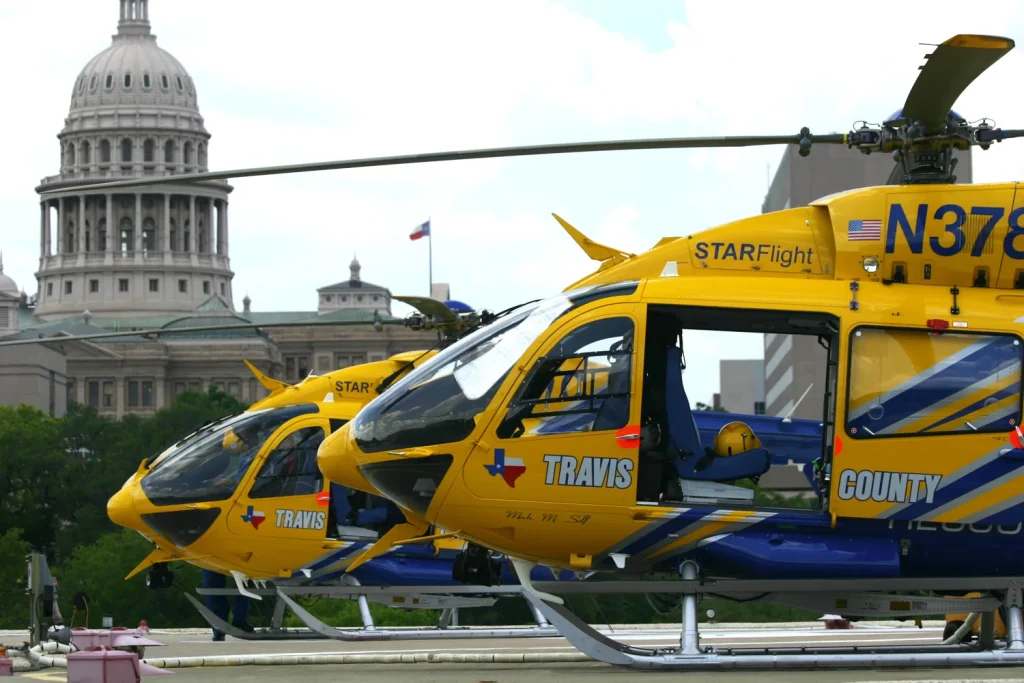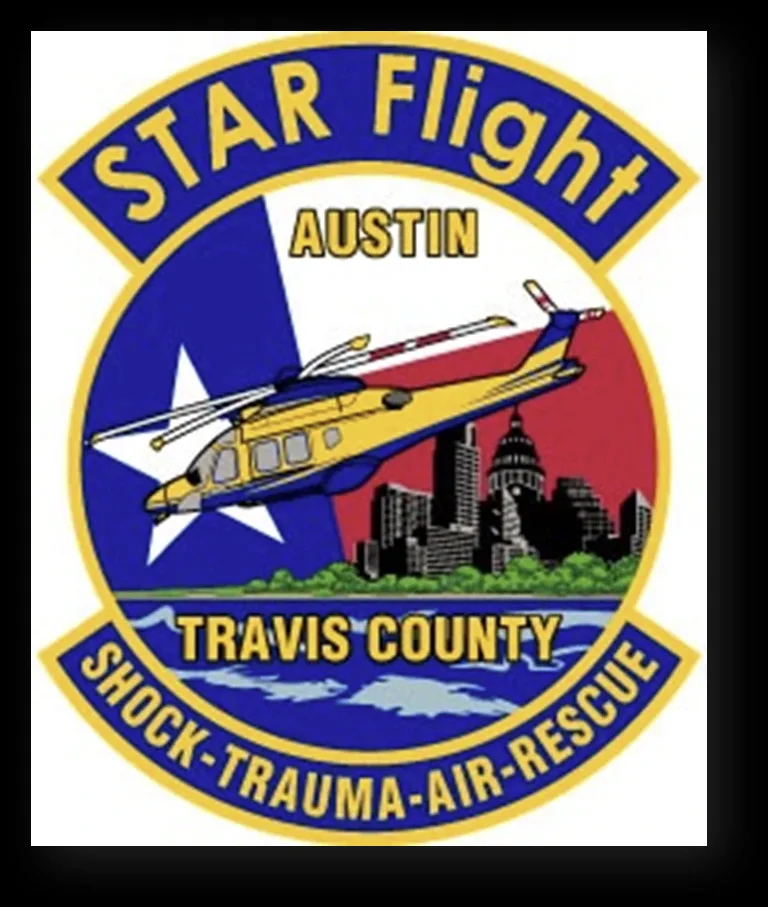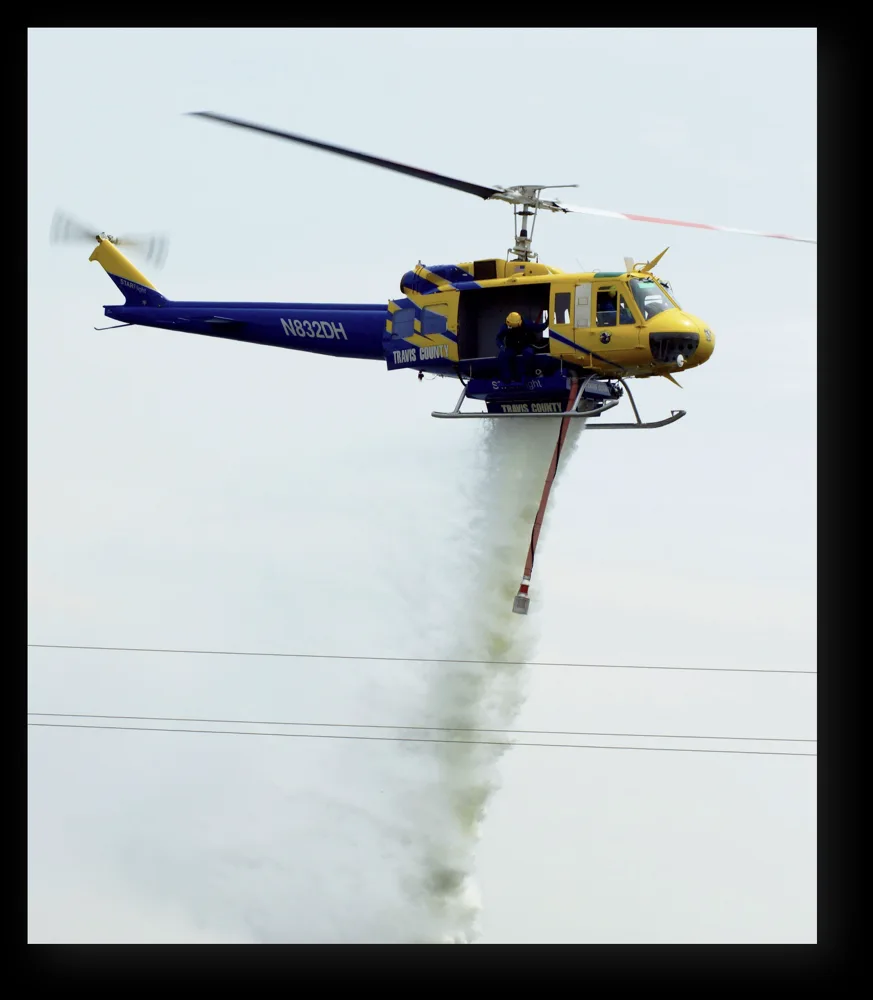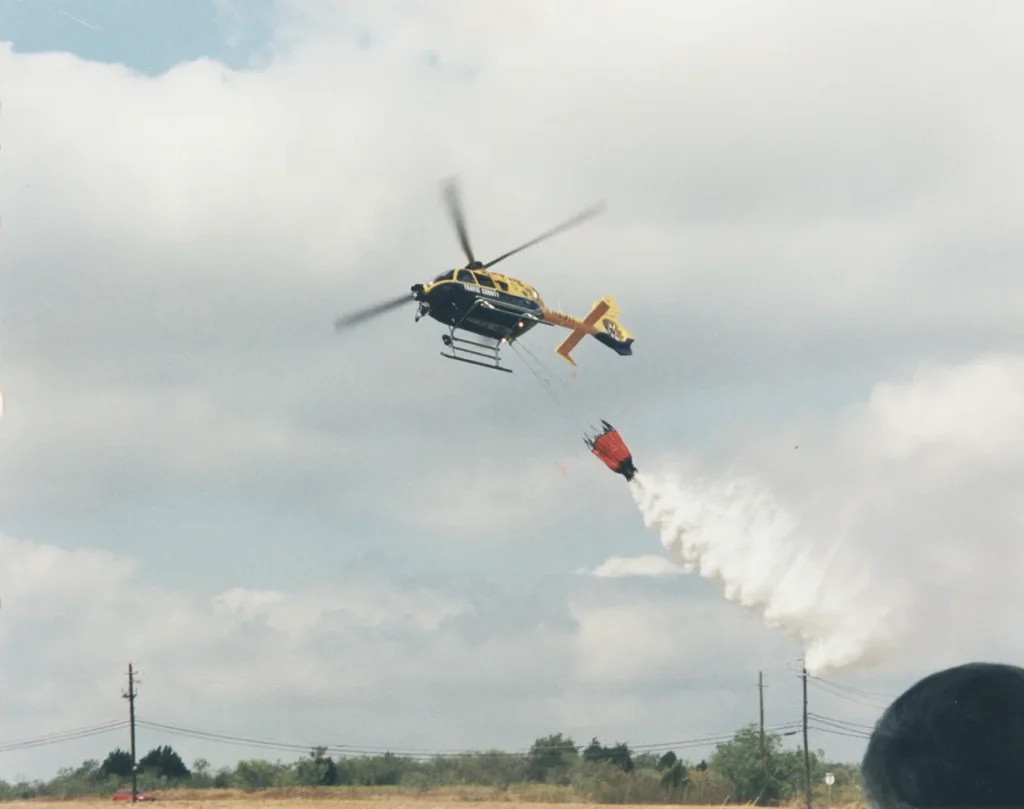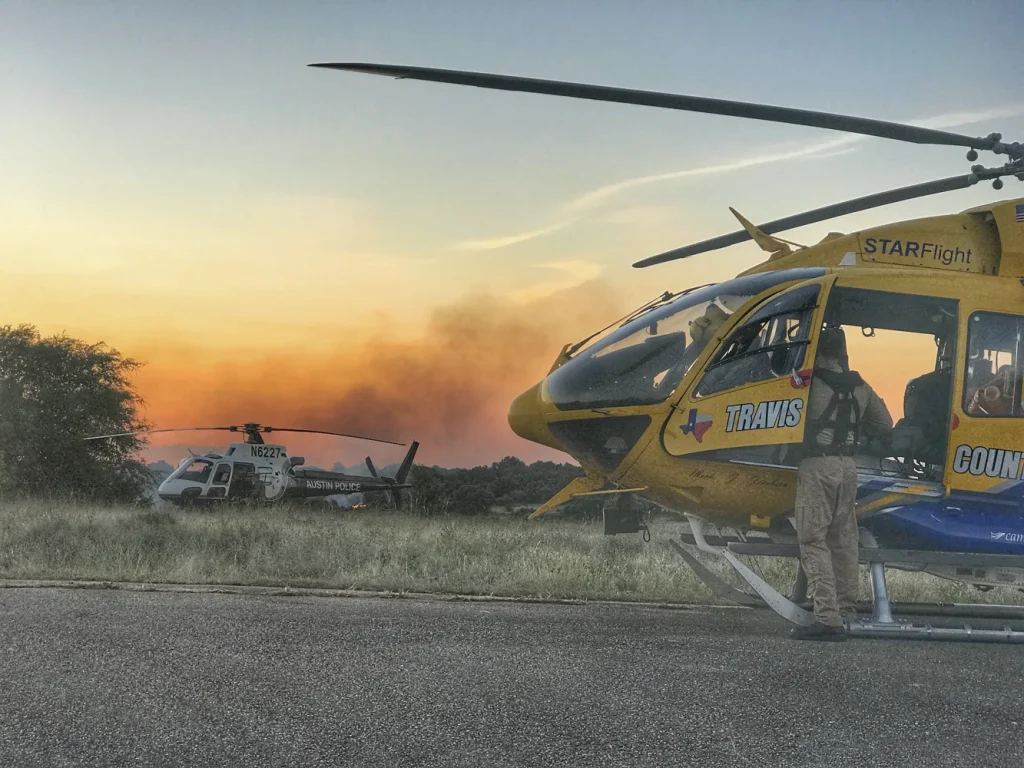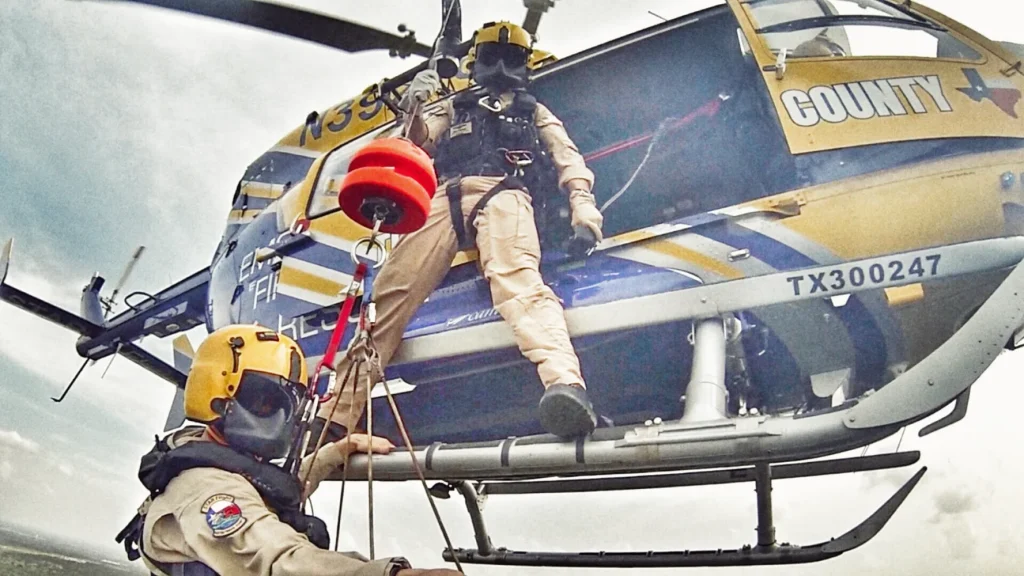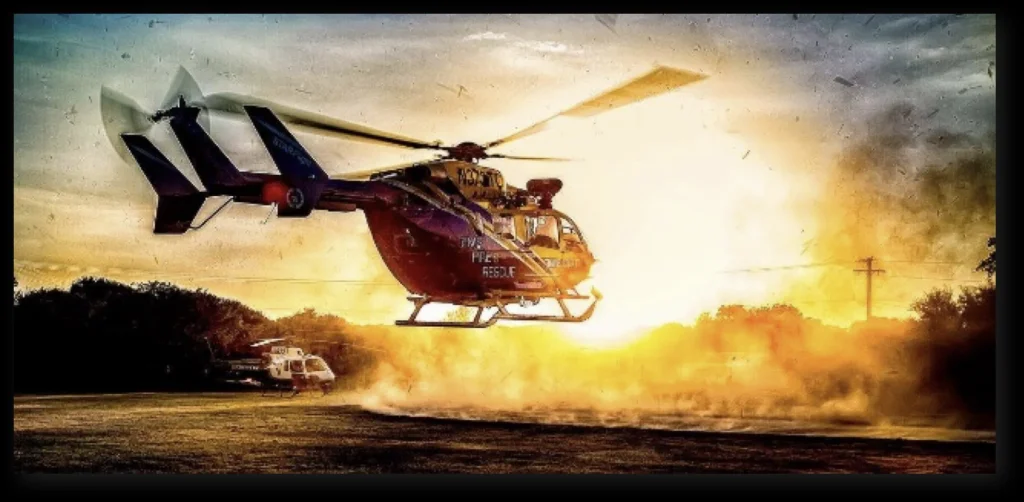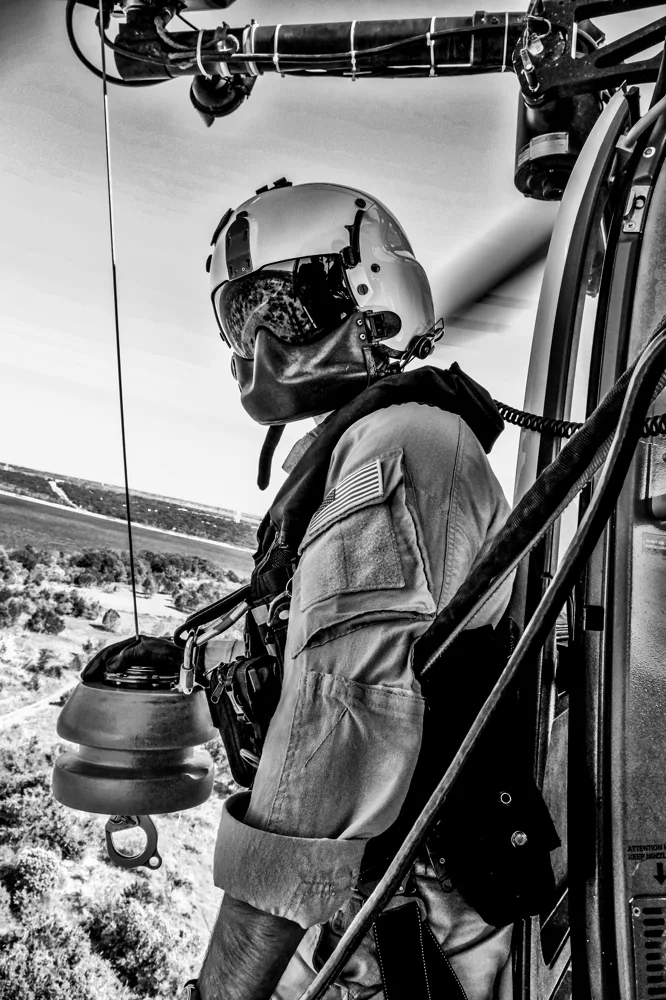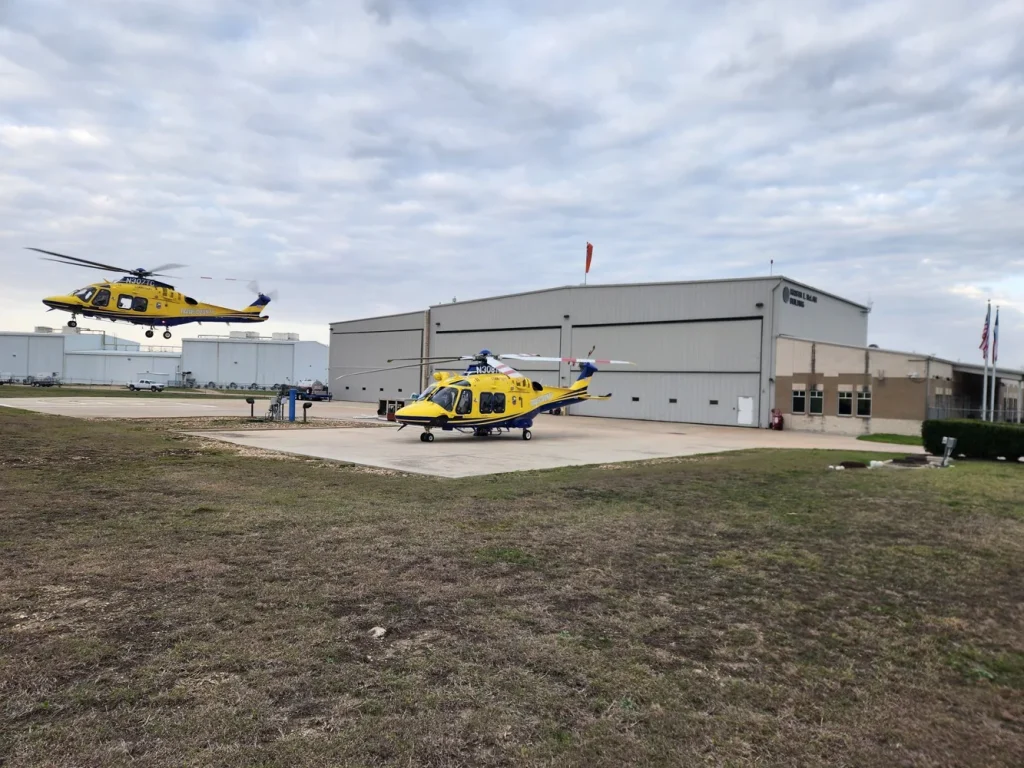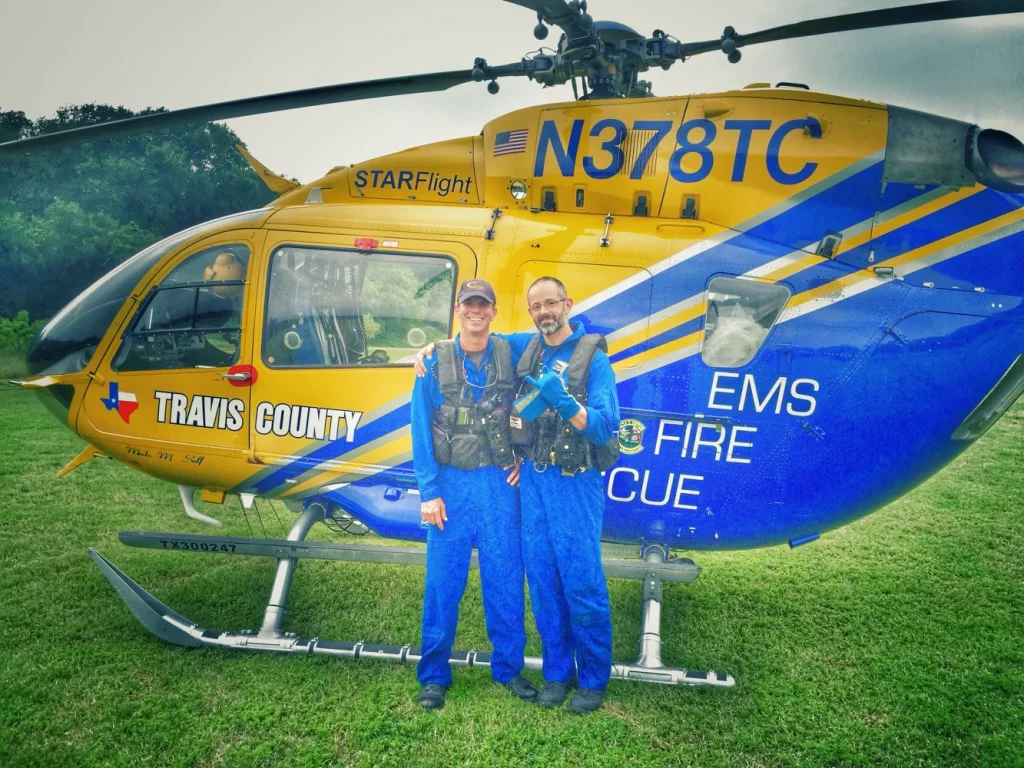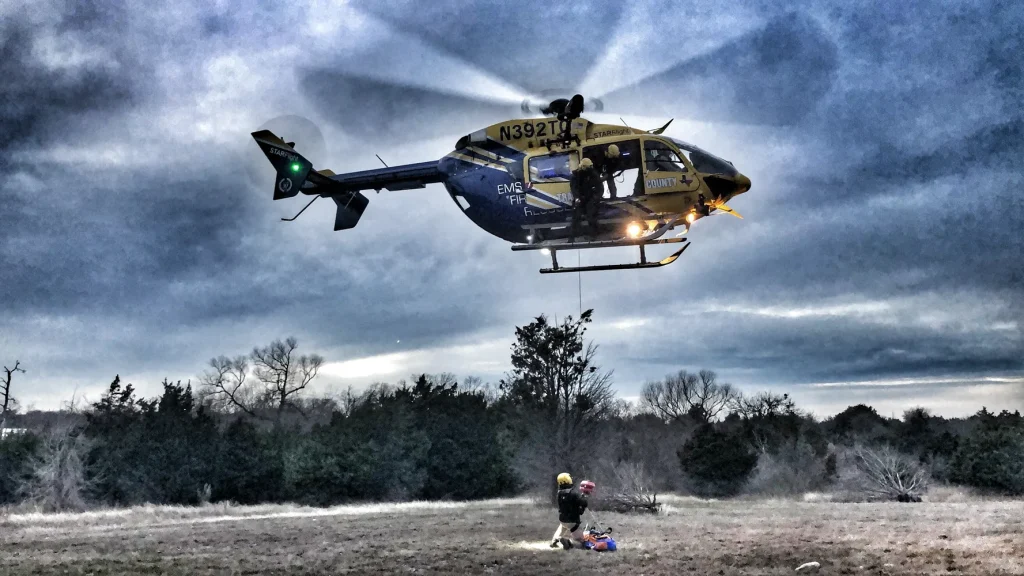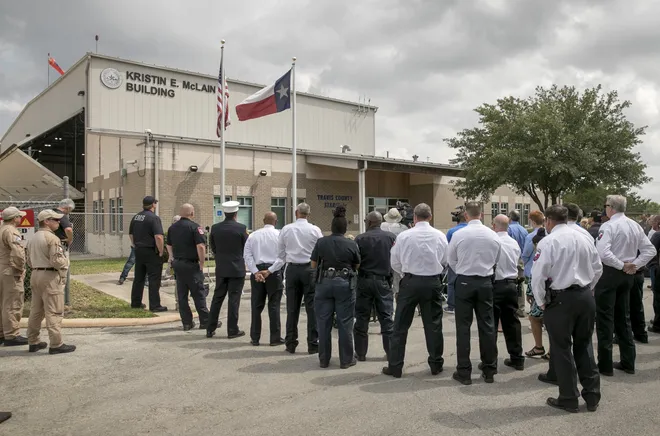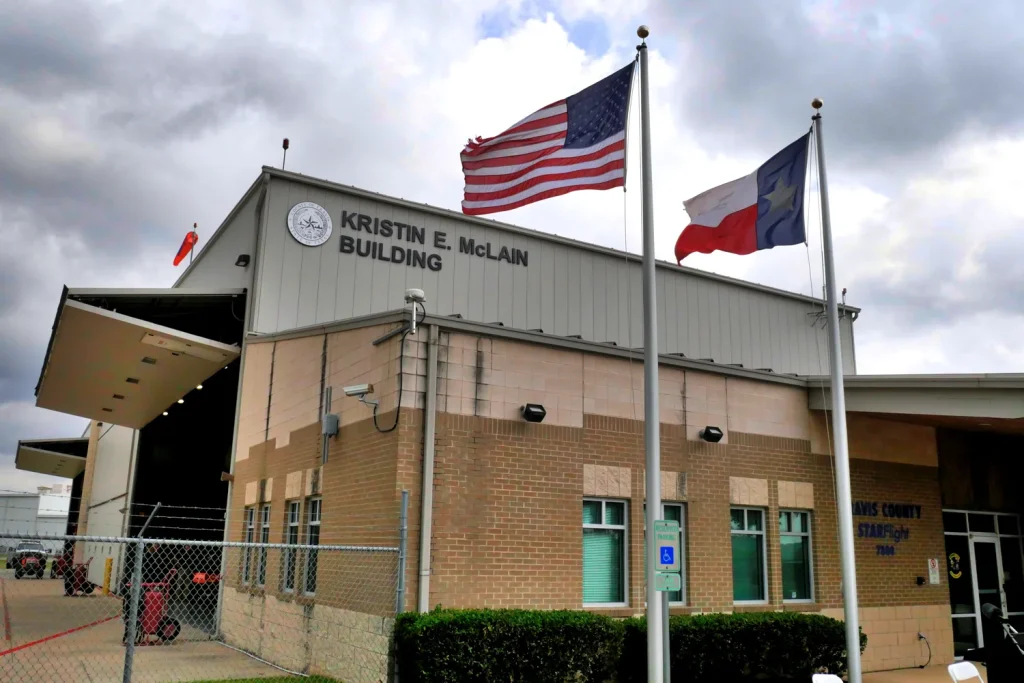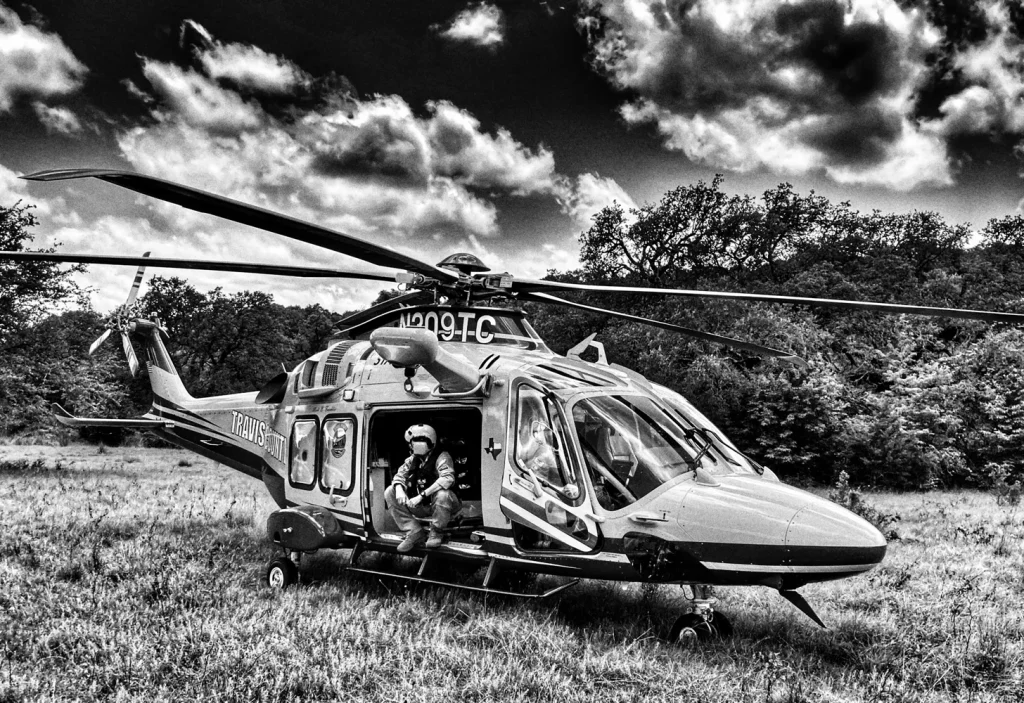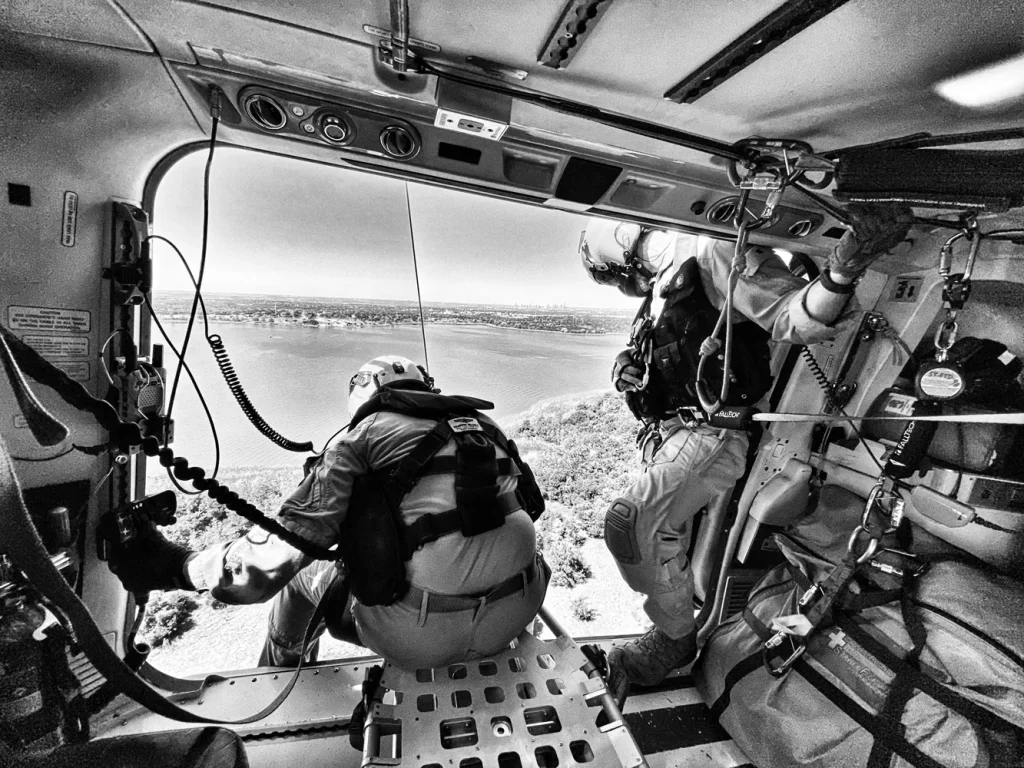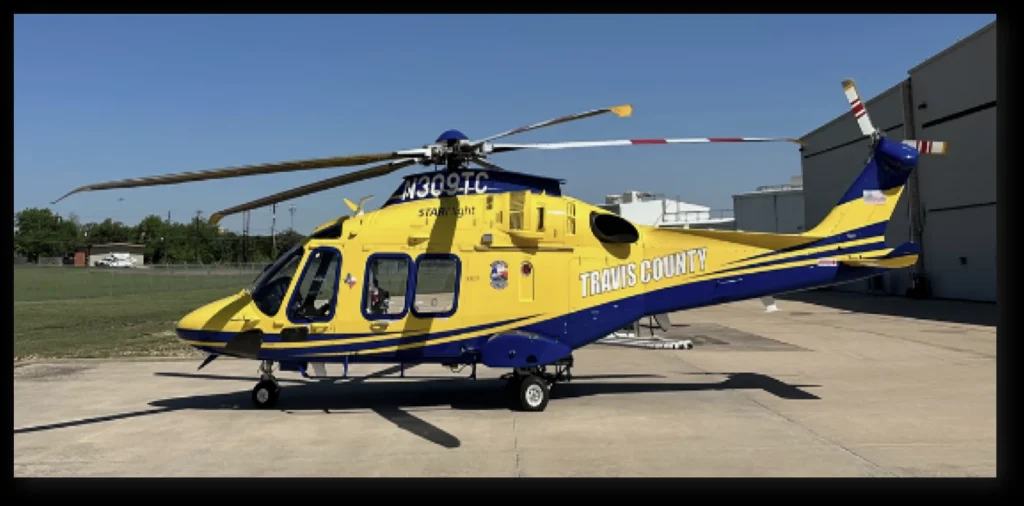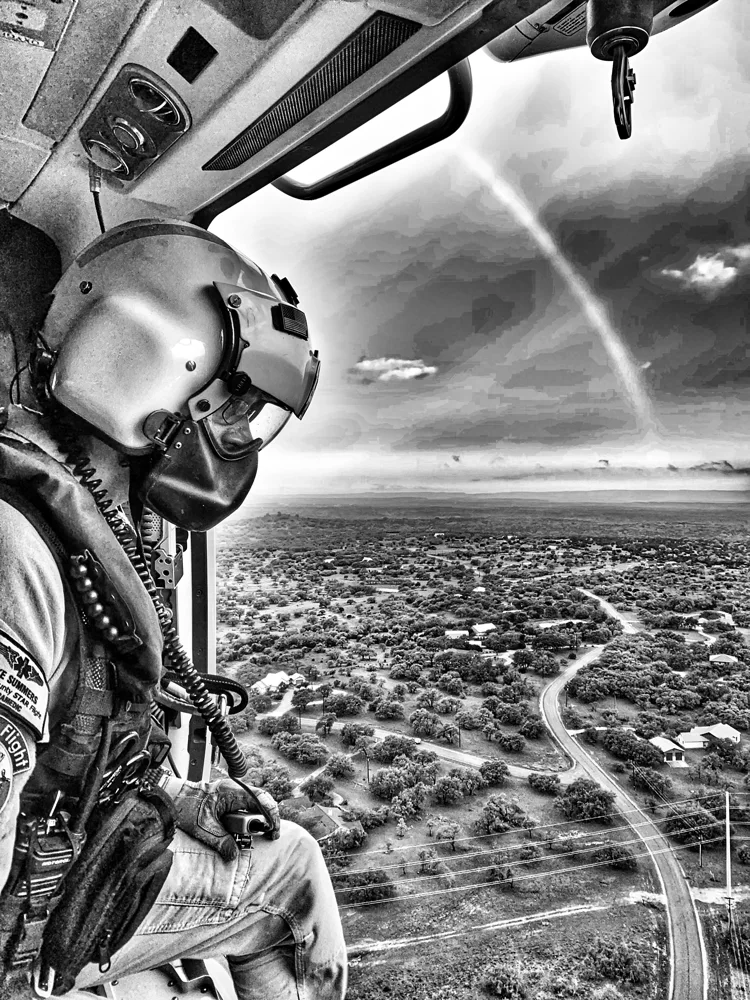STAR Flight
In honor of STAR Flight’s 40 years of operation, this online exhibit provides an overview of STAR Flight’s history and development.
STAR Flight is the emergency helicopter service of Travis County. An agency of the Travis County government, STAR Flight conducts air ambulance, search and rescue, firefighting, and law enforcement support missions. Based in Austin, its area of operations includes Travis County and 19 surrounding counties. Each aircraft is staffed with a pilot, a nurse, and a paramedic.
History
STAR (“Shock Trauma Air Rescue”) Flight is a unique public safety air rescue program that began in 1985 as a joint program involving Travis County, the City of Austin, and Brackenridge Hospital. STAR Flight originated primarily to conduct air medical transport, which still makes up the bulk of its missions today. The program was eventually centralized, with all personnel and equipment under the direction of Travis County.
With the addition of larger aircraft in 1990, STAR Flight’s capabilities were expanded to include search and rescue and firefighting. In 1998, Travis County began an experimental program to use STAR Flight’s smaller aircraft for law enforcement support missions. A dedicated firefighting aircraft was added to the fleet in 2013, largely in response to the 2011 wildfires in Bastrop, during which STAR Flight conducted extensive fire suppression efforts.
Today, one STAR Flight 24/7 duty aircraft is based at Dell Children’s Medical Center, with a second 24/7 duty aircraft located at the Kristin E. McLain Building at 7800 Old Manor Road. In addition, STAR Flight will soon have another base location near Round Mountain. This third base of operations was made possible through an agreement with Blanco County and Travis County. Blanco County graciously committed to fully funding and building the base of operations for STAR Flight to house an aircraft and crew to provide life-saving services in that area. This unique collaboration is expected to improve STAR Flight’s response times in western Travis County.
STAR Flight is the only helicopter program in Texas (with the exception of the U.S. Coast Guard) that maintains search and rescue services available 24 hours a day, 7 days a week.
Mission
STAR Flight responds to people experiencing medical problems, such as heart attacks or strokes, or suffering from traumatic injuries sustained in motor vehicle accidents or recreational activities. STAR Flight also responds to requests from rural hospitals to transport patients who require a higher level or specialized care.
As part of the EMS response, STAR Flight is dispatched through the same 911 system as other ambulances and fire equipment and is frequently dispatched at the same time. STAR Flight is utilized within the Travis County system as a first-response Advanced Life Support (ALS) ambulance. If a call is triaged through the dispatch center as a high priority medical request, and it is estimated that an ambulance will take longer than 20 minutes to arrive on scene, STAR Flight is automatically dispatched directly to the scene. This differs from most air programs in the country that are not requested until after an emergency unit arrives on scene and determines that a helicopter is needed. Liftoff times average between 7-10 minutes. It is Travis County’s goal to have an ALS-trained responder to the side of every patient within 20 minutes of receiving the call for assistance.
Travis County and the Texas Hill Country present many unique challenges for EMS and rescue crews. Commonly referred to as “Flash Flood Alley” due to the swift and severe nature of deadly flash flooding events, it holds distinction as the number one area in the nation for flash flood rescues. There are also several large lakes and rivers that are very popular for boating and water recreation. Access is often difficult and remote. The ability to rapidly locate the scene and deploy highly trained medical personnel directly to the scene, whether in or out of the water, has proven to be a lifesaver for many residents and visitors to Travis County’s lakes.
STAR Flight trains its personnel to operate safely and competently extricate patients from high hazard environments, including cliffs as well as still and swift water. All medical crews spend hundreds of hours training each year to treat and rescue people from these environments. STAR Flight rescuers can access a patient directly from the air via hoist and initiate advanced medical care for the patient.
Crew
The pilots, mechanics, flight paramedics and flight nurses are the main reason that the program has been successful for the last 40 years. Over the years, STAR Flight personnel have continued to refine and expand the capabilities of air rescue and patient care in the rescue environment.
STAR Flight pilots average 5,000 flight hours each and have Airline Transport Pilot or Commercial Instrument rating; Flight Nurses range from 7 to 20 years of experience in critical care and emergency care; Flight Paramedics have extensive experience in emergency medical response. Medical certifications maintained by the crew are extensive. In addition, STAR Flight collaborates with another Travis County department, the Department of Clinical Performance and Education (DCPE) to support required clinical education. The crews conduct helicopter rescue classes annually and have coordinated EMS education programs for rural services needing to add trained first responders to their rosters. Many of the medical staff also instruct in national verification courses and lecture at local, state, and national conferences and seminars. As the STAR Flight program is funded by tax-payer money, the personnel participate in community public education events throughout the year.
Aviation Maintenance
STAR Flight supports its flight operations of over 1,000 flight hours per year with an in-house team of five aviation maintenance technicians. The maintenance team has a combined 140 years of aviation maintenance experience. As the dynamic needs of the missions change and the complexity of the aircraft increase, the AMTs are ready to support.
Fleet
-
1985 – The first aircraft used by STAR Flight was a Bell 206B, later replaced with a Bell 206L3.
-
1990 – The larger Bell 412SP was added to the STAR Flight fleet.
-
1998 – STAR Flight replaced its original aircraft with two Eurocopter EC135s.
-
2006 – The EC135s were replaced in 2006 with two Eurocopter EC145s.
-
2010 – A third EC145 added to the fleet.
-
2013 – A Bell UH-1H was added to the fleet as a dedicated firefighting aircraft. The aircraft had seen service with the Army in Vietnam and was refurbished for STAR Flight by Northwest Helicopters. The aircraft was re-outfitted for firefighting during refurbishment, including the installation of a 325-gallon fixed tank.
-
2017 – Travis County awarded a contract to AgustaWestland Philadelphia Corporation to replace the existing fleet with three AW169s.
-
2019 – The AW169s were delivered by June and entered operational service two months later.
Originally, a hangar at the local airport was leased for space to work on each aircraft and to house the aircraft during inclement weather. In June 1999, STAR Flight moved to newly completed flight hangar, which is still in operation today. This hangar was funded in a bond proposal that passed with an approval rating of 98% of the citizens’ votes, which is still the highest approval rating of any bond package in Travis County’s history. This hangar facility contains administrative offices, a classroom, bedrooms for crew members when staffing the second aircraft, a kitchen facility, a day room, an overhead hoist, and all the equipment necessary to complete all maintenance needs in a secured and enclosed facility.
Travis County Emergency Services
STAR Flight is overseen by the Travis County Executive of Emergency Services, which also oversees the Offices of Emergency Management, Fire Marshal, and Technology and Communications. The Executive of Emergency Services also serves as liaison for the Commissioners Court with the Medical Examiner’s Office and the Emergency Services Districts (rural fire departments) throughout the County.
Emergency Services personnel provides leadership and support for the planning, coordination and delivery of emergency services within the County. In addition to STAR Flight, services include emergency management, fire investigation, medicolegal investigation, homeland security, hazmat services, technology and communications, and ground emergency medical transport (EMS).
Timeline
1985
STAR (Shock Trauma Air Rescue) Flight is born! It was established as a joint program involving Travis County, the City of Austin, and Brackenridge Hospital.
The first aircraft used by STAR Flight was a Bell 206B, later replaced with a Bell 206L3.
1990
The larger Bell 412SP was added to the STAR Flight fleet. This larger, more powerful aircraft was capable of carrying multiple patients and extra personnel.
STAR Flight’s capabilities were expanded to include search and rescue and fire flighting.
1998
STAR Flight replaced its original aircraft with two more modern aircraft, the Eurocopter EC135s.
Travis County began an experimental program to use smaller aircraft for law enforcement support missions.
1999
STAR Flight moved to a newly completed flight hangar, which is still in operation today. This hangar was funded in a bond proposal that passed with an approval rating of 98% of the citizens’ votes.
2006
The EC135s were replaced in 2006 with two Eurocopter EC145s. These larger aircraft allowed increased capabilities, including Rescue Hoists and Night Vision Goggles.
2008
STAR Flight was centralized in 2008, with all personal and equipment under the direction of Travis County.
2010
A third EC145 was added to the STAR Flight fleet.
2011
STAR Flight conducted extensive fire suppression efforts during the wildfires in Bastrop and Steiner Ranch.
2013
A Bell UH-1H ”Huey” was added to the fleet as a dedicated firefighting aircraft. The aircraft had seen service with the Army in Vietnam and was refurbished for STAR Flight by Northwest Helicopters. The aircraft was re-outfitted for firefighting during refurbishment, including the installation of a 325-gallon fixed tank.
2016
In 2016 Travis County began work to expand the hangar and add a third bay. This project was officially completed in June 2018. The third bay is where STAR Flight’s maintenance team resides and stores tools, helicopter parts and performs heavy maintenance.
2017
Travis County awarded a contract to AgustaWestland Philadelphia Corporation to replace the existing fleet with three AW169s.
2019
The STAR Flight fleet was replaced with a modern fleet of highly advanced helicopters with excellent flight performance, the Leonardo AW169.
On May 29, 2019 the STAR Flight Maintenance Hangar was officially renamed the Kristin E. McLain Building. The dedication was done in honor of Nurse Kristin McLain who lost her life while performing a helicopter hoist rescue in 2015.
